
New In 2024, The Ultimate Guide 3 Easy Video Game Recording Solutions

The Ultimate Guide: 3 Easy Video Game Recording Solutions
3 Simple Options for Recording Video Games

Liza Brown
Mar 27, 2024• Proven solutions
Whether Middle Earth: Shadow of Mordor, Titanfall or Destiny is your favorite video game or you prefer more nostalgic style game play like Mario Kart 8 or NBA 2K15, chances are you want to record something fantastic that happens (or that you do!) within the game. YouTube is filled with videos of gamers killing the newest games or reviewing new editions on brand new platforms. How do they make those awesome videos and capture all of their great plays? Simple—when you know which programs to use to take advantage of some of the latest software tools that can record your gaming screen effortlessly as you play!
Wondershare Filmstock Gaming Video Editing Skils ](https://filmstock.wondershare.com/creative-theme-game?source%5Fchannel=seo%5Farticle&spm=rs.filmora%5Fweb )
Record Video Games with Fraps
Fraps is the old standby that is easy to use, even for recording newbies, and remains the most popular choice for recording video gameplay. Aside from its simple user interface, it can display game benchmarks and easily make adjustments for framerates and sizing. Fraps was designed specifically to run while your games are playing and record in high quality, and it does a great job at that dedicated task. While some users complain that the size of Fraps files are huge, you can use a different application to compress the files for uploading and sharing.
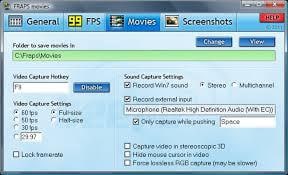
Use liteCam for game recording
The liteCam game recording software can capture your game at up to 60 fps, and it will record OpenGL and DirectX games that other software cannot. While you simply choose from preset keys to set up your recording, which makes it easier to use, there is no option to capture still shots which some people like to have. Even though it does not have quite as many extra settings and tools as a lot of other video game recording software, it does produce good-quality recordings that many gamers appreciate for their use.
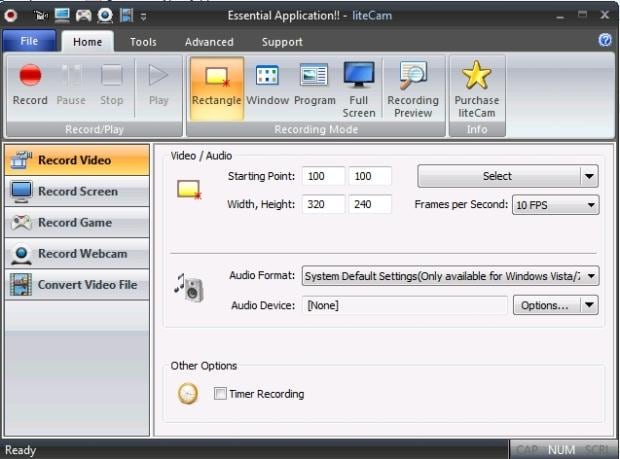
Use Wondershare Filmora for game capturing
Wondershare Filmora is a multipurpose video software tool with a built-in webcam recorder which allows you to easily capture with your webcam. Audio recording is also made easy, perfect for game players who want to showcase your favorite games with your followers. It offers built-in converters and video editor supporting converting and editing many different video formats shot either with your camcorder or iPhone or Android. Wondershare Filmora is different from some of the others on the market as it not only allows video capture but also provides a handful of video editing, video uploading choices, and it works with multiple devices. This program has a high speed processor and lots of varied settings, and a simple and user-friendly interface, along with exceptional video editing tools to make your recording fun and easy. You can download a 30-day free trial here to check out:
Are you addicted to Diablo 3: Ultimate Evil Edition? Show off your mad skills saving the world of Sanctuary with an amazing recorded video from your game. The best tools allow you to easily upload your gameplay videos wherever you’d like to share.

Liza Brown
Liza Brown is a writer and a lover of all things video.
Follow @Liza Brown
Liza Brown
Mar 27, 2024• Proven solutions
Whether Middle Earth: Shadow of Mordor, Titanfall or Destiny is your favorite video game or you prefer more nostalgic style game play like Mario Kart 8 or NBA 2K15, chances are you want to record something fantastic that happens (or that you do!) within the game. YouTube is filled with videos of gamers killing the newest games or reviewing new editions on brand new platforms. How do they make those awesome videos and capture all of their great plays? Simple—when you know which programs to use to take advantage of some of the latest software tools that can record your gaming screen effortlessly as you play!
Wondershare Filmstock Gaming Video Editing Skils ](https://filmstock.wondershare.com/creative-theme-game?source%5Fchannel=seo%5Farticle&spm=rs.filmora%5Fweb )
Record Video Games with Fraps
Fraps is the old standby that is easy to use, even for recording newbies, and remains the most popular choice for recording video gameplay. Aside from its simple user interface, it can display game benchmarks and easily make adjustments for framerates and sizing. Fraps was designed specifically to run while your games are playing and record in high quality, and it does a great job at that dedicated task. While some users complain that the size of Fraps files are huge, you can use a different application to compress the files for uploading and sharing.

Use liteCam for game recording
The liteCam game recording software can capture your game at up to 60 fps, and it will record OpenGL and DirectX games that other software cannot. While you simply choose from preset keys to set up your recording, which makes it easier to use, there is no option to capture still shots which some people like to have. Even though it does not have quite as many extra settings and tools as a lot of other video game recording software, it does produce good-quality recordings that many gamers appreciate for their use.

Use Wondershare Filmora for game capturing
Wondershare Filmora is a multipurpose video software tool with a built-in webcam recorder which allows you to easily capture with your webcam. Audio recording is also made easy, perfect for game players who want to showcase your favorite games with your followers. It offers built-in converters and video editor supporting converting and editing many different video formats shot either with your camcorder or iPhone or Android. Wondershare Filmora is different from some of the others on the market as it not only allows video capture but also provides a handful of video editing, video uploading choices, and it works with multiple devices. This program has a high speed processor and lots of varied settings, and a simple and user-friendly interface, along with exceptional video editing tools to make your recording fun and easy. You can download a 30-day free trial here to check out:
Are you addicted to Diablo 3: Ultimate Evil Edition? Show off your mad skills saving the world of Sanctuary with an amazing recorded video from your game. The best tools allow you to easily upload your gameplay videos wherever you’d like to share.

Liza Brown
Liza Brown is a writer and a lover of all things video.
Follow @Liza Brown
Liza Brown
Mar 27, 2024• Proven solutions
Whether Middle Earth: Shadow of Mordor, Titanfall or Destiny is your favorite video game or you prefer more nostalgic style game play like Mario Kart 8 or NBA 2K15, chances are you want to record something fantastic that happens (or that you do!) within the game. YouTube is filled with videos of gamers killing the newest games or reviewing new editions on brand new platforms. How do they make those awesome videos and capture all of their great plays? Simple—when you know which programs to use to take advantage of some of the latest software tools that can record your gaming screen effortlessly as you play!
Wondershare Filmstock Gaming Video Editing Skils ](https://filmstock.wondershare.com/creative-theme-game?source%5Fchannel=seo%5Farticle&spm=rs.filmora%5Fweb )
Record Video Games with Fraps
Fraps is the old standby that is easy to use, even for recording newbies, and remains the most popular choice for recording video gameplay. Aside from its simple user interface, it can display game benchmarks and easily make adjustments for framerates and sizing. Fraps was designed specifically to run while your games are playing and record in high quality, and it does a great job at that dedicated task. While some users complain that the size of Fraps files are huge, you can use a different application to compress the files for uploading and sharing.

Use liteCam for game recording
The liteCam game recording software can capture your game at up to 60 fps, and it will record OpenGL and DirectX games that other software cannot. While you simply choose from preset keys to set up your recording, which makes it easier to use, there is no option to capture still shots which some people like to have. Even though it does not have quite as many extra settings and tools as a lot of other video game recording software, it does produce good-quality recordings that many gamers appreciate for their use.

Use Wondershare Filmora for game capturing
Wondershare Filmora is a multipurpose video software tool with a built-in webcam recorder which allows you to easily capture with your webcam. Audio recording is also made easy, perfect for game players who want to showcase your favorite games with your followers. It offers built-in converters and video editor supporting converting and editing many different video formats shot either with your camcorder or iPhone or Android. Wondershare Filmora is different from some of the others on the market as it not only allows video capture but also provides a handful of video editing, video uploading choices, and it works with multiple devices. This program has a high speed processor and lots of varied settings, and a simple and user-friendly interface, along with exceptional video editing tools to make your recording fun and easy. You can download a 30-day free trial here to check out:
Are you addicted to Diablo 3: Ultimate Evil Edition? Show off your mad skills saving the world of Sanctuary with an amazing recorded video from your game. The best tools allow you to easily upload your gameplay videos wherever you’d like to share.

Liza Brown
Liza Brown is a writer and a lover of all things video.
Follow @Liza Brown
Liza Brown
Mar 27, 2024• Proven solutions
Whether Middle Earth: Shadow of Mordor, Titanfall or Destiny is your favorite video game or you prefer more nostalgic style game play like Mario Kart 8 or NBA 2K15, chances are you want to record something fantastic that happens (or that you do!) within the game. YouTube is filled with videos of gamers killing the newest games or reviewing new editions on brand new platforms. How do they make those awesome videos and capture all of their great plays? Simple—when you know which programs to use to take advantage of some of the latest software tools that can record your gaming screen effortlessly as you play!
Wondershare Filmstock Gaming Video Editing Skils ](https://filmstock.wondershare.com/creative-theme-game?source%5Fchannel=seo%5Farticle&spm=rs.filmora%5Fweb )
Record Video Games with Fraps
Fraps is the old standby that is easy to use, even for recording newbies, and remains the most popular choice for recording video gameplay. Aside from its simple user interface, it can display game benchmarks and easily make adjustments for framerates and sizing. Fraps was designed specifically to run while your games are playing and record in high quality, and it does a great job at that dedicated task. While some users complain that the size of Fraps files are huge, you can use a different application to compress the files for uploading and sharing.

Use liteCam for game recording
The liteCam game recording software can capture your game at up to 60 fps, and it will record OpenGL and DirectX games that other software cannot. While you simply choose from preset keys to set up your recording, which makes it easier to use, there is no option to capture still shots which some people like to have. Even though it does not have quite as many extra settings and tools as a lot of other video game recording software, it does produce good-quality recordings that many gamers appreciate for their use.

Use Wondershare Filmora for game capturing
Wondershare Filmora is a multipurpose video software tool with a built-in webcam recorder which allows you to easily capture with your webcam. Audio recording is also made easy, perfect for game players who want to showcase your favorite games with your followers. It offers built-in converters and video editor supporting converting and editing many different video formats shot either with your camcorder or iPhone or Android. Wondershare Filmora is different from some of the others on the market as it not only allows video capture but also provides a handful of video editing, video uploading choices, and it works with multiple devices. This program has a high speed processor and lots of varied settings, and a simple and user-friendly interface, along with exceptional video editing tools to make your recording fun and easy. You can download a 30-day free trial here to check out:
Are you addicted to Diablo 3: Ultimate Evil Edition? Show off your mad skills saving the world of Sanctuary with an amazing recorded video from your game. The best tools allow you to easily upload your gameplay videos wherever you’d like to share.

Liza Brown
Liza Brown is a writer and a lover of all things video.
Follow @Liza Brown
Final Cut Pro : 2 Simple Ways to Add Professional Audio Fades
Two Ways to Fade In/Out Audio in Final Cut Pro

Benjamin Arango
Mar 27, 2024• Proven solutions
Creating a fade in or out effect in Final Cut Pro will make your audio amazing. However, as Final Cut Pro is for pros, not every user knows how to make fade in/out audio. In fact, it is very easy to fade audio in Final Cut Pro. This tutorial will show you how to apply effects like fade-in, fade-out, and crossfade to your audio clips using Final Cut Pro in two ways.
Part 1: Use the Modify Menu to Fade In/Out Audio
Part 2: Use Fade Handles to Fade In/Out Audio
This tutorial offers only the basics of the audio fading techniques in Apple Final Cut Pro X, which is a specialized video editing software used by professionals worldwide. If you are an amateur who is new to video editing, we suggest you begin with Wondershare Filmora for Mac (originally Wondershare Video Editor for Mac). It is a powerful yet easy-to-use software that is ideal for beginners. You can download the free trial version of Wondershare Filmora below.
 Download Mac Version ](https://tools.techidaily.com/wondershare/filmora/download/ )
Download Mac Version ](https://tools.techidaily.com/wondershare/filmora/download/ )
With this modern and extremely user-friendly tool, you’ll find that applying effects like fade-in, fade-out, or crossfade to your audio clips is very easy.
Before we get started, you can firstly detach the audio from video to better edit it. Locate your audio clip in the timeline, highlight the desired audio/video clip, right click on it, and choose Detach audio to unlink your audio from your video to edit them as separate elements.
Check more articles here, if you are also interested in other audio editing tips in Final Cut Pro or want to know how to record a voice over with FCP.
Part 1: How to Fade Audio by using the Modify Menu
You can go to the Modify menu and easily apply fade-in or fade-outs to the audio clip you are editing. The Final Cut Pro preferences also allow you to adjust the fade duration.
Step 1 : First, you have to select the audio or the video clips with audio in the timeline.

Step 2 : Select Modify> Adjust Volume> Apply Fades.

You should remember that the fades appear at the beginning and the end of each clip. The default duration of the fade is one half-second. If you want to modify that duration, you just have to drag the fade handle up to the point where your fade is supposed to begin or end.

Step 3: If you want to remove the fades, choose Modify > Adjust Volume > Remove Fades.
See more details on how to fade audio in Final Cut Pro from the following video.
Part 2: How to Fade Music by using Fade Handles
You have already learned how to find the fade handles on the screen. Now, you just have to manually drag the handle to the exact point from which you want the fade to begin or end. Just keep in mid this simple rule: fade handles at the beginning of a clip produce fade-in effects, whereas fade handles at the end give fade-out effects.
You can manually fade-in or out a portion of the audio clip on your timeline by using the fade handles. Place the pointer over the clip and you can see the fade handles appearing in the top left and right corners of the waveform. To change the sound of the fade, you’ll have to modify the shape of the fade by selecting one of the several preconfigured choices.
Using the fade handles to create crossfades:
Step 1 : To create a crossfade, first you have to select two adjacent clips in the timeline. After that choose Clip> Expand Audio (or press Control-S). You can see the waveforms on your screen expanding.
Step 2 : To overlap the audio parts of the two clips on your timeline, just drag the end point of the first clip and the start point of the second clip.
Step 3 : Now, you’ll have to drag the fade handles of each clip to the exact points where you want the fade to start and finish.

Tips: How to change fade shapes while using the fade handle
You can easily change the sound of your fades by modifying the default fade shape. For this, you’ll have to control-click a fade handle and select one of the fade preferences from the list.

- Linear: The rate of change is constant over the length of the fade.
- S-curve: Eases in and out of the fade with the midpoint at 0 dB.
- +3dB: Picks up quickly and then gradually peters out toward the end. This is the considered to be the most useful mode while choosing a quick fade.
- –3dB: Begins slowly and then toward the end picks up fast. This setting allows you to maintain a perfectly natural volume while crossfading two clips.
- Linear: Maintains a constant rate of change over the length of the fade.
- S-curve: Eases in and out of the fade with the midpoint at 0 dB.
- +3dB: Starts quickly and then slowly tapers off toward the end. This is the most useful setting for quick fades.
- –3dB: Starts slowly and then moves quickly toward the end. This is the default setting and is best for maintaining a natural volume when crossfading between two adjacent clips.

Benjamin Arango
Benjamin Arango is a writer and a lover of all things video.
Follow @Benjamin Arango
Benjamin Arango
Mar 27, 2024• Proven solutions
Creating a fade in or out effect in Final Cut Pro will make your audio amazing. However, as Final Cut Pro is for pros, not every user knows how to make fade in/out audio. In fact, it is very easy to fade audio in Final Cut Pro. This tutorial will show you how to apply effects like fade-in, fade-out, and crossfade to your audio clips using Final Cut Pro in two ways.
Part 1: Use the Modify Menu to Fade In/Out Audio
Part 2: Use Fade Handles to Fade In/Out Audio
This tutorial offers only the basics of the audio fading techniques in Apple Final Cut Pro X, which is a specialized video editing software used by professionals worldwide. If you are an amateur who is new to video editing, we suggest you begin with Wondershare Filmora for Mac (originally Wondershare Video Editor for Mac). It is a powerful yet easy-to-use software that is ideal for beginners. You can download the free trial version of Wondershare Filmora below.
 Download Mac Version ](https://tools.techidaily.com/wondershare/filmora/download/ )
Download Mac Version ](https://tools.techidaily.com/wondershare/filmora/download/ )
With this modern and extremely user-friendly tool, you’ll find that applying effects like fade-in, fade-out, or crossfade to your audio clips is very easy.
Before we get started, you can firstly detach the audio from video to better edit it. Locate your audio clip in the timeline, highlight the desired audio/video clip, right click on it, and choose Detach audio to unlink your audio from your video to edit them as separate elements.
Check more articles here, if you are also interested in other audio editing tips in Final Cut Pro or want to know how to record a voice over with FCP.
Part 1: How to Fade Audio by using the Modify Menu
You can go to the Modify menu and easily apply fade-in or fade-outs to the audio clip you are editing. The Final Cut Pro preferences also allow you to adjust the fade duration.
Step 1 : First, you have to select the audio or the video clips with audio in the timeline.

Step 2 : Select Modify> Adjust Volume> Apply Fades.

You should remember that the fades appear at the beginning and the end of each clip. The default duration of the fade is one half-second. If you want to modify that duration, you just have to drag the fade handle up to the point where your fade is supposed to begin or end.

Step 3: If you want to remove the fades, choose Modify > Adjust Volume > Remove Fades.
See more details on how to fade audio in Final Cut Pro from the following video.
Part 2: How to Fade Music by using Fade Handles
You have already learned how to find the fade handles on the screen. Now, you just have to manually drag the handle to the exact point from which you want the fade to begin or end. Just keep in mid this simple rule: fade handles at the beginning of a clip produce fade-in effects, whereas fade handles at the end give fade-out effects.
You can manually fade-in or out a portion of the audio clip on your timeline by using the fade handles. Place the pointer over the clip and you can see the fade handles appearing in the top left and right corners of the waveform. To change the sound of the fade, you’ll have to modify the shape of the fade by selecting one of the several preconfigured choices.
Using the fade handles to create crossfades:
Step 1 : To create a crossfade, first you have to select two adjacent clips in the timeline. After that choose Clip> Expand Audio (or press Control-S). You can see the waveforms on your screen expanding.
Step 2 : To overlap the audio parts of the two clips on your timeline, just drag the end point of the first clip and the start point of the second clip.
Step 3 : Now, you’ll have to drag the fade handles of each clip to the exact points where you want the fade to start and finish.

Tips: How to change fade shapes while using the fade handle
You can easily change the sound of your fades by modifying the default fade shape. For this, you’ll have to control-click a fade handle and select one of the fade preferences from the list.

- Linear: The rate of change is constant over the length of the fade.
- S-curve: Eases in and out of the fade with the midpoint at 0 dB.
- +3dB: Picks up quickly and then gradually peters out toward the end. This is the considered to be the most useful mode while choosing a quick fade.
- –3dB: Begins slowly and then toward the end picks up fast. This setting allows you to maintain a perfectly natural volume while crossfading two clips.
- Linear: Maintains a constant rate of change over the length of the fade.
- S-curve: Eases in and out of the fade with the midpoint at 0 dB.
- +3dB: Starts quickly and then slowly tapers off toward the end. This is the most useful setting for quick fades.
- –3dB: Starts slowly and then moves quickly toward the end. This is the default setting and is best for maintaining a natural volume when crossfading between two adjacent clips.

Benjamin Arango
Benjamin Arango is a writer and a lover of all things video.
Follow @Benjamin Arango
Benjamin Arango
Mar 27, 2024• Proven solutions
Creating a fade in or out effect in Final Cut Pro will make your audio amazing. However, as Final Cut Pro is for pros, not every user knows how to make fade in/out audio. In fact, it is very easy to fade audio in Final Cut Pro. This tutorial will show you how to apply effects like fade-in, fade-out, and crossfade to your audio clips using Final Cut Pro in two ways.
Part 1: Use the Modify Menu to Fade In/Out Audio
Part 2: Use Fade Handles to Fade In/Out Audio
This tutorial offers only the basics of the audio fading techniques in Apple Final Cut Pro X, which is a specialized video editing software used by professionals worldwide. If you are an amateur who is new to video editing, we suggest you begin with Wondershare Filmora for Mac (originally Wondershare Video Editor for Mac). It is a powerful yet easy-to-use software that is ideal for beginners. You can download the free trial version of Wondershare Filmora below.
 Download Mac Version ](https://tools.techidaily.com/wondershare/filmora/download/ )
Download Mac Version ](https://tools.techidaily.com/wondershare/filmora/download/ )
With this modern and extremely user-friendly tool, you’ll find that applying effects like fade-in, fade-out, or crossfade to your audio clips is very easy.
Before we get started, you can firstly detach the audio from video to better edit it. Locate your audio clip in the timeline, highlight the desired audio/video clip, right click on it, and choose Detach audio to unlink your audio from your video to edit them as separate elements.
Check more articles here, if you are also interested in other audio editing tips in Final Cut Pro or want to know how to record a voice over with FCP.
Part 1: How to Fade Audio by using the Modify Menu
You can go to the Modify menu and easily apply fade-in or fade-outs to the audio clip you are editing. The Final Cut Pro preferences also allow you to adjust the fade duration.
Step 1 : First, you have to select the audio or the video clips with audio in the timeline.

Step 2 : Select Modify> Adjust Volume> Apply Fades.

You should remember that the fades appear at the beginning and the end of each clip. The default duration of the fade is one half-second. If you want to modify that duration, you just have to drag the fade handle up to the point where your fade is supposed to begin or end.

Step 3: If you want to remove the fades, choose Modify > Adjust Volume > Remove Fades.
See more details on how to fade audio in Final Cut Pro from the following video.
Part 2: How to Fade Music by using Fade Handles
You have already learned how to find the fade handles on the screen. Now, you just have to manually drag the handle to the exact point from which you want the fade to begin or end. Just keep in mid this simple rule: fade handles at the beginning of a clip produce fade-in effects, whereas fade handles at the end give fade-out effects.
You can manually fade-in or out a portion of the audio clip on your timeline by using the fade handles. Place the pointer over the clip and you can see the fade handles appearing in the top left and right corners of the waveform. To change the sound of the fade, you’ll have to modify the shape of the fade by selecting one of the several preconfigured choices.
Using the fade handles to create crossfades:
Step 1 : To create a crossfade, first you have to select two adjacent clips in the timeline. After that choose Clip> Expand Audio (or press Control-S). You can see the waveforms on your screen expanding.
Step 2 : To overlap the audio parts of the two clips on your timeline, just drag the end point of the first clip and the start point of the second clip.
Step 3 : Now, you’ll have to drag the fade handles of each clip to the exact points where you want the fade to start and finish.

Tips: How to change fade shapes while using the fade handle
You can easily change the sound of your fades by modifying the default fade shape. For this, you’ll have to control-click a fade handle and select one of the fade preferences from the list.

- Linear: The rate of change is constant over the length of the fade.
- S-curve: Eases in and out of the fade with the midpoint at 0 dB.
- +3dB: Picks up quickly and then gradually peters out toward the end. This is the considered to be the most useful mode while choosing a quick fade.
- –3dB: Begins slowly and then toward the end picks up fast. This setting allows you to maintain a perfectly natural volume while crossfading two clips.
- Linear: Maintains a constant rate of change over the length of the fade.
- S-curve: Eases in and out of the fade with the midpoint at 0 dB.
- +3dB: Starts quickly and then slowly tapers off toward the end. This is the most useful setting for quick fades.
- –3dB: Starts slowly and then moves quickly toward the end. This is the default setting and is best for maintaining a natural volume when crossfading between two adjacent clips.

Benjamin Arango
Benjamin Arango is a writer and a lover of all things video.
Follow @Benjamin Arango
Benjamin Arango
Mar 27, 2024• Proven solutions
Creating a fade in or out effect in Final Cut Pro will make your audio amazing. However, as Final Cut Pro is for pros, not every user knows how to make fade in/out audio. In fact, it is very easy to fade audio in Final Cut Pro. This tutorial will show you how to apply effects like fade-in, fade-out, and crossfade to your audio clips using Final Cut Pro in two ways.
Part 1: Use the Modify Menu to Fade In/Out Audio
Part 2: Use Fade Handles to Fade In/Out Audio
This tutorial offers only the basics of the audio fading techniques in Apple Final Cut Pro X, which is a specialized video editing software used by professionals worldwide. If you are an amateur who is new to video editing, we suggest you begin with Wondershare Filmora for Mac (originally Wondershare Video Editor for Mac). It is a powerful yet easy-to-use software that is ideal for beginners. You can download the free trial version of Wondershare Filmora below.
 Download Mac Version ](https://tools.techidaily.com/wondershare/filmora/download/ )
Download Mac Version ](https://tools.techidaily.com/wondershare/filmora/download/ )
With this modern and extremely user-friendly tool, you’ll find that applying effects like fade-in, fade-out, or crossfade to your audio clips is very easy.
Before we get started, you can firstly detach the audio from video to better edit it. Locate your audio clip in the timeline, highlight the desired audio/video clip, right click on it, and choose Detach audio to unlink your audio from your video to edit them as separate elements.
Check more articles here, if you are also interested in other audio editing tips in Final Cut Pro or want to know how to record a voice over with FCP.
Part 1: How to Fade Audio by using the Modify Menu
You can go to the Modify menu and easily apply fade-in or fade-outs to the audio clip you are editing. The Final Cut Pro preferences also allow you to adjust the fade duration.
Step 1 : First, you have to select the audio or the video clips with audio in the timeline.

Step 2 : Select Modify> Adjust Volume> Apply Fades.

You should remember that the fades appear at the beginning and the end of each clip. The default duration of the fade is one half-second. If you want to modify that duration, you just have to drag the fade handle up to the point where your fade is supposed to begin or end.

Step 3: If you want to remove the fades, choose Modify > Adjust Volume > Remove Fades.
See more details on how to fade audio in Final Cut Pro from the following video.
Part 2: How to Fade Music by using Fade Handles
You have already learned how to find the fade handles on the screen. Now, you just have to manually drag the handle to the exact point from which you want the fade to begin or end. Just keep in mid this simple rule: fade handles at the beginning of a clip produce fade-in effects, whereas fade handles at the end give fade-out effects.
You can manually fade-in or out a portion of the audio clip on your timeline by using the fade handles. Place the pointer over the clip and you can see the fade handles appearing in the top left and right corners of the waveform. To change the sound of the fade, you’ll have to modify the shape of the fade by selecting one of the several preconfigured choices.
Using the fade handles to create crossfades:
Step 1 : To create a crossfade, first you have to select two adjacent clips in the timeline. After that choose Clip> Expand Audio (or press Control-S). You can see the waveforms on your screen expanding.
Step 2 : To overlap the audio parts of the two clips on your timeline, just drag the end point of the first clip and the start point of the second clip.
Step 3 : Now, you’ll have to drag the fade handles of each clip to the exact points where you want the fade to start and finish.

Tips: How to change fade shapes while using the fade handle
You can easily change the sound of your fades by modifying the default fade shape. For this, you’ll have to control-click a fade handle and select one of the fade preferences from the list.

- Linear: The rate of change is constant over the length of the fade.
- S-curve: Eases in and out of the fade with the midpoint at 0 dB.
- +3dB: Picks up quickly and then gradually peters out toward the end. This is the considered to be the most useful mode while choosing a quick fade.
- –3dB: Begins slowly and then toward the end picks up fast. This setting allows you to maintain a perfectly natural volume while crossfading two clips.
- Linear: Maintains a constant rate of change over the length of the fade.
- S-curve: Eases in and out of the fade with the midpoint at 0 dB.
- +3dB: Starts quickly and then slowly tapers off toward the end. This is the most useful setting for quick fades.
- –3dB: Starts slowly and then moves quickly toward the end. This is the default setting and is best for maintaining a natural volume when crossfading between two adjacent clips.

Benjamin Arango
Benjamin Arango is a writer and a lover of all things video.
Follow @Benjamin Arango
Saving Your Sanity (and Your Project): FCP Best Practices
How to Save Final Cut Pro Project the Right Way?

Shanoon Cox
Mar 27, 2024• Proven solutions
aIn the Final Cut Pro, you can find the autosave option to store the changes made on the file automatically without any manual intervention.
To overcome the manual mechanism, the autosave feature in the FCP app keeps the last changes on the file precisely. In this article, you can find insightful ideas about the autosave mechanism and the manual storage process.
In addition, you will learn how to save the finished projects on the external drives effortlessly. A detailed focus on saving the completed projects on the Final Cut Pro app has been highlighted in the below content. Synopsis on the usage of batch export and discovery of the missing files are discussed to enlighten you with the essential data.
Part 1: The autosave mechanism of Final Cut Pro X and manual storage procedure
In this section, get some mind-blowing facts on the autosave and manual options on the Final Cut Pro app!
The FCP tool autosaves the changes every 15 minutes. The saved projects are available in the libraries file as a backup for the restore process. You can go to the library folder to view the autosaved projects. The last edited changes can be reflected by tapping the undo option in the Edit menu.
Stepwise instructions to modify the autosave settings in the FCPX program
Step 1: Launch the FCPX app, press Ctrl+Q to open the ‘User Preferences’ window.
Step 2: In the ‘User Preferences’ screen, you can find a wide range of options to modify. Alter the levels of Undo, autosave vault attributes according to your needs, and save the changes. You can witness these parameters in the General section in the User Preference screen.
Use the User Preference window to make necessary changes according to your requirement. BY default, the Autosave Vault is enabled, and you can work on the projects without any hesitation. Additionally, you can modify the attributes like ‘Save a copy for every’, ‘ Keep at most’, and ‘Maximum of’ to personalize your projects.

When the FCP file is open, you need not worry about the saving procedure. The app triggers the autosave mechanism for regular intervals, and the changes will be up-to-date. If you want to store the files manually, then work with its library files. A simple operation like Ctrl+c and Ctrl+v helps you to move the autosaved projects to any storage location. Here are few tips to restore the autosaved FCP files.
Detailed guidelines on the restoration of autosaved files.
Step 1 Open the Final Cut Pro app on your device.
Step 2 Tap the ‘Libraries Sidebar’ to choose the desired library for restore action. Now hit File -> Open Library -> Backup options on the screen.
Step 3 Surf the backup files and choose the desired one that requires a view. Press the Restore from’ option from the pop-up items. Finally, press the ‘Open’ button.

The manual storage option is feasible only after deactivating the autosave mechanism on the FCPX tool. It is not advisable to carry out this activity. The autosave option keeps your works up-to-date, and you will not miss the recent changes at any cost. You can still disable the autosave option to try the manual storage process.
In the FCPX app, press ‘File -> Library Properties’, then from the displayed items, select the ‘Modify Settings’ option beside the ‘Storage Location’ label. Now, in the backups option select ‘Do not Save’ to deactivate the autosave mechanism.

After completing this procedure, save the changes and get back to the working timeline of
FCPX to continue with your projects. When you edit any projects use the save option without fail else the changes made will be lost in no time.
Part 2: How to save FCPX projects to desktop or external drives?
Many experts recommend opting for an external storage location to save the FCPX files. It occupies more space, and you need to be careful while selecting the drives to store the library files of the FCPX projects. While saving the files, remove the generated data to optimize the storage process.
First, remove the generated files in the library
Step 1: Tap the Libraries sidebar in the FCPX tool and select ‘Library’ and choose the ’Cache’ option in the property window of Library.
Step 2: Next, press ‘File -> Delete Generated Library Files’. To remove the unnecessary generated files.

The above action helps to clear up the space occupied by the project. If you want to free up more space, then delete most of the listed generated files.
Secondly, now transfer the FCPX project to external drives.
Step 1 Select the Libraries Sidebar in the FCPX program and choose the desired ‘Library’. Then hit ‘File -> Reveal in Finder. Now, the file opens in the new finder window.
Step 2 Close the FCPX screen and drag the library files from the Finder window to the external hard drive.

Finally, you had made it. The FCPX projects were successfully moved on to the external drives quickly. Use the above technique to carry out flawless storage or transfer process.
Part 3: Where to find missing files or projects in final cut pro?
Many users feel that their project files were lost in the event of renaming. It becomes a missed file, and they will feel that the files were no were on their system. To handle this scenario, you must learn to think out of the box. You can use the relink technique to find the missed files in the Final Cut Pro app.
The procedure is like the method of searching a particular file in your system using the ‘Search’ option. Here, Relink file functionality is available to set up a link again with the lost file to get back its storage space.
Open the application and select the clip you want to discover. Go to the File menu on the title bar and choose Relink File option from the expanded items. A bunch of files will be displayed below, and you can choose the desired missed file from the collections. There are options to filter the discovered files by choosing between Missing and All options.
Click the ‘Locate All’ button available at the bottom right side of the screen and navigate the folders to link with the perfect file. Press the ‘Choose’ button after selecting the missed file from the list.
From the selected options, The Final Cut Pro application analyses all the attributes in the files and lists out the original files. Now hit the ‘Relink Files’ option to complete the file hunt process.

Part 4: How to use Batch Export to save multiple projects in FCPX?
Perform the batch export for the files that carry similar settings. You can proceed with the flawless export procedure when the project files have the same roles, captions, and settings. The export option becomes limited if the project contains a mix of these attributes.
Batch Export is the processing of sharing multiple files to desired storage space from your app ambiance. Appropriate clicks on the correct controls simplify the task. This procedure requires special attention because there is a chance of data loss when you handle bulk files at a time. The purpose of opting for the bunch export option is that you can complete the transfer tasks quickly. Exporting individual files is time-consuming and requires many clicks to move the desired files to the respective destination. This Batch Export feature in FCPX program enhances the users while working with many files.
Step 1 Launch the FCPX app on your device.
Step 2 In the Libraries sidebar, tap the library option, and select the desired projects that require the batch export.
Step 1 Now, click the File -> Share option to trigger the export process.

It is advisable to export the Master files to retain the quality of the project. You can share the projects without compromising their quality factors.
Conclusion
As you all know that saving a project after successful completion is a crucial action. Few designers, editors, and developers unknowingly ignore this step. There are many applications embeds automatic saving function to enhance the editors to store their finished tasks.
Thus, this article had given valuable insights on how to save the FCPX projects and the methods to backup and restore them. You had acquired an idea about the effective way to spot the missed project files. Finally, tips and tricks associated with the batch export were discussed to ensure flawless bulk file sharing in the secure channel. Use the above content to work comfortably with the FCPX app. Stay tuned to this article to discover enlightening facts on the Final Cut Pro application.

Shanoon Cox
Shanoon Cox is a writer and a lover of all things video.
Follow @Shanoon Cox
Shanoon Cox
Mar 27, 2024• Proven solutions
aIn the Final Cut Pro, you can find the autosave option to store the changes made on the file automatically without any manual intervention.
To overcome the manual mechanism, the autosave feature in the FCP app keeps the last changes on the file precisely. In this article, you can find insightful ideas about the autosave mechanism and the manual storage process.
In addition, you will learn how to save the finished projects on the external drives effortlessly. A detailed focus on saving the completed projects on the Final Cut Pro app has been highlighted in the below content. Synopsis on the usage of batch export and discovery of the missing files are discussed to enlighten you with the essential data.
Part 1: The autosave mechanism of Final Cut Pro X and manual storage procedure
In this section, get some mind-blowing facts on the autosave and manual options on the Final Cut Pro app!
The FCP tool autosaves the changes every 15 minutes. The saved projects are available in the libraries file as a backup for the restore process. You can go to the library folder to view the autosaved projects. The last edited changes can be reflected by tapping the undo option in the Edit menu.
Stepwise instructions to modify the autosave settings in the FCPX program
Step 1: Launch the FCPX app, press Ctrl+Q to open the ‘User Preferences’ window.
Step 2: In the ‘User Preferences’ screen, you can find a wide range of options to modify. Alter the levels of Undo, autosave vault attributes according to your needs, and save the changes. You can witness these parameters in the General section in the User Preference screen.
Use the User Preference window to make necessary changes according to your requirement. BY default, the Autosave Vault is enabled, and you can work on the projects without any hesitation. Additionally, you can modify the attributes like ‘Save a copy for every’, ‘ Keep at most’, and ‘Maximum of’ to personalize your projects.

When the FCP file is open, you need not worry about the saving procedure. The app triggers the autosave mechanism for regular intervals, and the changes will be up-to-date. If you want to store the files manually, then work with its library files. A simple operation like Ctrl+c and Ctrl+v helps you to move the autosaved projects to any storage location. Here are few tips to restore the autosaved FCP files.
Detailed guidelines on the restoration of autosaved files.
Step 1 Open the Final Cut Pro app on your device.
Step 2 Tap the ‘Libraries Sidebar’ to choose the desired library for restore action. Now hit File -> Open Library -> Backup options on the screen.
Step 3 Surf the backup files and choose the desired one that requires a view. Press the Restore from’ option from the pop-up items. Finally, press the ‘Open’ button.

The manual storage option is feasible only after deactivating the autosave mechanism on the FCPX tool. It is not advisable to carry out this activity. The autosave option keeps your works up-to-date, and you will not miss the recent changes at any cost. You can still disable the autosave option to try the manual storage process.
In the FCPX app, press ‘File -> Library Properties’, then from the displayed items, select the ‘Modify Settings’ option beside the ‘Storage Location’ label. Now, in the backups option select ‘Do not Save’ to deactivate the autosave mechanism.

After completing this procedure, save the changes and get back to the working timeline of
FCPX to continue with your projects. When you edit any projects use the save option without fail else the changes made will be lost in no time.
Part 2: How to save FCPX projects to desktop or external drives?
Many experts recommend opting for an external storage location to save the FCPX files. It occupies more space, and you need to be careful while selecting the drives to store the library files of the FCPX projects. While saving the files, remove the generated data to optimize the storage process.
First, remove the generated files in the library
Step 1: Tap the Libraries sidebar in the FCPX tool and select ‘Library’ and choose the ’Cache’ option in the property window of Library.
Step 2: Next, press ‘File -> Delete Generated Library Files’. To remove the unnecessary generated files.

The above action helps to clear up the space occupied by the project. If you want to free up more space, then delete most of the listed generated files.
Secondly, now transfer the FCPX project to external drives.
Step 1 Select the Libraries Sidebar in the FCPX program and choose the desired ‘Library’. Then hit ‘File -> Reveal in Finder. Now, the file opens in the new finder window.
Step 2 Close the FCPX screen and drag the library files from the Finder window to the external hard drive.

Finally, you had made it. The FCPX projects were successfully moved on to the external drives quickly. Use the above technique to carry out flawless storage or transfer process.
Part 3: Where to find missing files or projects in final cut pro?
Many users feel that their project files were lost in the event of renaming. It becomes a missed file, and they will feel that the files were no were on their system. To handle this scenario, you must learn to think out of the box. You can use the relink technique to find the missed files in the Final Cut Pro app.
The procedure is like the method of searching a particular file in your system using the ‘Search’ option. Here, Relink file functionality is available to set up a link again with the lost file to get back its storage space.
Open the application and select the clip you want to discover. Go to the File menu on the title bar and choose Relink File option from the expanded items. A bunch of files will be displayed below, and you can choose the desired missed file from the collections. There are options to filter the discovered files by choosing between Missing and All options.
Click the ‘Locate All’ button available at the bottom right side of the screen and navigate the folders to link with the perfect file. Press the ‘Choose’ button after selecting the missed file from the list.
From the selected options, The Final Cut Pro application analyses all the attributes in the files and lists out the original files. Now hit the ‘Relink Files’ option to complete the file hunt process.

Part 4: How to use Batch Export to save multiple projects in FCPX?
Perform the batch export for the files that carry similar settings. You can proceed with the flawless export procedure when the project files have the same roles, captions, and settings. The export option becomes limited if the project contains a mix of these attributes.
Batch Export is the processing of sharing multiple files to desired storage space from your app ambiance. Appropriate clicks on the correct controls simplify the task. This procedure requires special attention because there is a chance of data loss when you handle bulk files at a time. The purpose of opting for the bunch export option is that you can complete the transfer tasks quickly. Exporting individual files is time-consuming and requires many clicks to move the desired files to the respective destination. This Batch Export feature in FCPX program enhances the users while working with many files.
Step 1 Launch the FCPX app on your device.
Step 2 In the Libraries sidebar, tap the library option, and select the desired projects that require the batch export.
Step 1 Now, click the File -> Share option to trigger the export process.

It is advisable to export the Master files to retain the quality of the project. You can share the projects without compromising their quality factors.
Conclusion
As you all know that saving a project after successful completion is a crucial action. Few designers, editors, and developers unknowingly ignore this step. There are many applications embeds automatic saving function to enhance the editors to store their finished tasks.
Thus, this article had given valuable insights on how to save the FCPX projects and the methods to backup and restore them. You had acquired an idea about the effective way to spot the missed project files. Finally, tips and tricks associated with the batch export were discussed to ensure flawless bulk file sharing in the secure channel. Use the above content to work comfortably with the FCPX app. Stay tuned to this article to discover enlightening facts on the Final Cut Pro application.

Shanoon Cox
Shanoon Cox is a writer and a lover of all things video.
Follow @Shanoon Cox
Shanoon Cox
Mar 27, 2024• Proven solutions
aIn the Final Cut Pro, you can find the autosave option to store the changes made on the file automatically without any manual intervention.
To overcome the manual mechanism, the autosave feature in the FCP app keeps the last changes on the file precisely. In this article, you can find insightful ideas about the autosave mechanism and the manual storage process.
In addition, you will learn how to save the finished projects on the external drives effortlessly. A detailed focus on saving the completed projects on the Final Cut Pro app has been highlighted in the below content. Synopsis on the usage of batch export and discovery of the missing files are discussed to enlighten you with the essential data.
Part 1: The autosave mechanism of Final Cut Pro X and manual storage procedure
In this section, get some mind-blowing facts on the autosave and manual options on the Final Cut Pro app!
The FCP tool autosaves the changes every 15 minutes. The saved projects are available in the libraries file as a backup for the restore process. You can go to the library folder to view the autosaved projects. The last edited changes can be reflected by tapping the undo option in the Edit menu.
Stepwise instructions to modify the autosave settings in the FCPX program
Step 1: Launch the FCPX app, press Ctrl+Q to open the ‘User Preferences’ window.
Step 2: In the ‘User Preferences’ screen, you can find a wide range of options to modify. Alter the levels of Undo, autosave vault attributes according to your needs, and save the changes. You can witness these parameters in the General section in the User Preference screen.
Use the User Preference window to make necessary changes according to your requirement. BY default, the Autosave Vault is enabled, and you can work on the projects without any hesitation. Additionally, you can modify the attributes like ‘Save a copy for every’, ‘ Keep at most’, and ‘Maximum of’ to personalize your projects.

When the FCP file is open, you need not worry about the saving procedure. The app triggers the autosave mechanism for regular intervals, and the changes will be up-to-date. If you want to store the files manually, then work with its library files. A simple operation like Ctrl+c and Ctrl+v helps you to move the autosaved projects to any storage location. Here are few tips to restore the autosaved FCP files.
Detailed guidelines on the restoration of autosaved files.
Step 1 Open the Final Cut Pro app on your device.
Step 2 Tap the ‘Libraries Sidebar’ to choose the desired library for restore action. Now hit File -> Open Library -> Backup options on the screen.
Step 3 Surf the backup files and choose the desired one that requires a view. Press the Restore from’ option from the pop-up items. Finally, press the ‘Open’ button.

The manual storage option is feasible only after deactivating the autosave mechanism on the FCPX tool. It is not advisable to carry out this activity. The autosave option keeps your works up-to-date, and you will not miss the recent changes at any cost. You can still disable the autosave option to try the manual storage process.
In the FCPX app, press ‘File -> Library Properties’, then from the displayed items, select the ‘Modify Settings’ option beside the ‘Storage Location’ label. Now, in the backups option select ‘Do not Save’ to deactivate the autosave mechanism.

After completing this procedure, save the changes and get back to the working timeline of
FCPX to continue with your projects. When you edit any projects use the save option without fail else the changes made will be lost in no time.
Part 2: How to save FCPX projects to desktop or external drives?
Many experts recommend opting for an external storage location to save the FCPX files. It occupies more space, and you need to be careful while selecting the drives to store the library files of the FCPX projects. While saving the files, remove the generated data to optimize the storage process.
First, remove the generated files in the library
Step 1: Tap the Libraries sidebar in the FCPX tool and select ‘Library’ and choose the ’Cache’ option in the property window of Library.
Step 2: Next, press ‘File -> Delete Generated Library Files’. To remove the unnecessary generated files.

The above action helps to clear up the space occupied by the project. If you want to free up more space, then delete most of the listed generated files.
Secondly, now transfer the FCPX project to external drives.
Step 1 Select the Libraries Sidebar in the FCPX program and choose the desired ‘Library’. Then hit ‘File -> Reveal in Finder. Now, the file opens in the new finder window.
Step 2 Close the FCPX screen and drag the library files from the Finder window to the external hard drive.

Finally, you had made it. The FCPX projects were successfully moved on to the external drives quickly. Use the above technique to carry out flawless storage or transfer process.
Part 3: Where to find missing files or projects in final cut pro?
Many users feel that their project files were lost in the event of renaming. It becomes a missed file, and they will feel that the files were no were on their system. To handle this scenario, you must learn to think out of the box. You can use the relink technique to find the missed files in the Final Cut Pro app.
The procedure is like the method of searching a particular file in your system using the ‘Search’ option. Here, Relink file functionality is available to set up a link again with the lost file to get back its storage space.
Open the application and select the clip you want to discover. Go to the File menu on the title bar and choose Relink File option from the expanded items. A bunch of files will be displayed below, and you can choose the desired missed file from the collections. There are options to filter the discovered files by choosing between Missing and All options.
Click the ‘Locate All’ button available at the bottom right side of the screen and navigate the folders to link with the perfect file. Press the ‘Choose’ button after selecting the missed file from the list.
From the selected options, The Final Cut Pro application analyses all the attributes in the files and lists out the original files. Now hit the ‘Relink Files’ option to complete the file hunt process.

Part 4: How to use Batch Export to save multiple projects in FCPX?
Perform the batch export for the files that carry similar settings. You can proceed with the flawless export procedure when the project files have the same roles, captions, and settings. The export option becomes limited if the project contains a mix of these attributes.
Batch Export is the processing of sharing multiple files to desired storage space from your app ambiance. Appropriate clicks on the correct controls simplify the task. This procedure requires special attention because there is a chance of data loss when you handle bulk files at a time. The purpose of opting for the bunch export option is that you can complete the transfer tasks quickly. Exporting individual files is time-consuming and requires many clicks to move the desired files to the respective destination. This Batch Export feature in FCPX program enhances the users while working with many files.
Step 1 Launch the FCPX app on your device.
Step 2 In the Libraries sidebar, tap the library option, and select the desired projects that require the batch export.
Step 1 Now, click the File -> Share option to trigger the export process.

It is advisable to export the Master files to retain the quality of the project. You can share the projects without compromising their quality factors.
Conclusion
As you all know that saving a project after successful completion is a crucial action. Few designers, editors, and developers unknowingly ignore this step. There are many applications embeds automatic saving function to enhance the editors to store their finished tasks.
Thus, this article had given valuable insights on how to save the FCPX projects and the methods to backup and restore them. You had acquired an idea about the effective way to spot the missed project files. Finally, tips and tricks associated with the batch export were discussed to ensure flawless bulk file sharing in the secure channel. Use the above content to work comfortably with the FCPX app. Stay tuned to this article to discover enlightening facts on the Final Cut Pro application.

Shanoon Cox
Shanoon Cox is a writer and a lover of all things video.
Follow @Shanoon Cox
Shanoon Cox
Mar 27, 2024• Proven solutions
aIn the Final Cut Pro, you can find the autosave option to store the changes made on the file automatically without any manual intervention.
To overcome the manual mechanism, the autosave feature in the FCP app keeps the last changes on the file precisely. In this article, you can find insightful ideas about the autosave mechanism and the manual storage process.
In addition, you will learn how to save the finished projects on the external drives effortlessly. A detailed focus on saving the completed projects on the Final Cut Pro app has been highlighted in the below content. Synopsis on the usage of batch export and discovery of the missing files are discussed to enlighten you with the essential data.
Part 1: The autosave mechanism of Final Cut Pro X and manual storage procedure
In this section, get some mind-blowing facts on the autosave and manual options on the Final Cut Pro app!
The FCP tool autosaves the changes every 15 minutes. The saved projects are available in the libraries file as a backup for the restore process. You can go to the library folder to view the autosaved projects. The last edited changes can be reflected by tapping the undo option in the Edit menu.
Stepwise instructions to modify the autosave settings in the FCPX program
Step 1: Launch the FCPX app, press Ctrl+Q to open the ‘User Preferences’ window.
Step 2: In the ‘User Preferences’ screen, you can find a wide range of options to modify. Alter the levels of Undo, autosave vault attributes according to your needs, and save the changes. You can witness these parameters in the General section in the User Preference screen.
Use the User Preference window to make necessary changes according to your requirement. BY default, the Autosave Vault is enabled, and you can work on the projects without any hesitation. Additionally, you can modify the attributes like ‘Save a copy for every’, ‘ Keep at most’, and ‘Maximum of’ to personalize your projects.

When the FCP file is open, you need not worry about the saving procedure. The app triggers the autosave mechanism for regular intervals, and the changes will be up-to-date. If you want to store the files manually, then work with its library files. A simple operation like Ctrl+c and Ctrl+v helps you to move the autosaved projects to any storage location. Here are few tips to restore the autosaved FCP files.
Detailed guidelines on the restoration of autosaved files.
Step 1 Open the Final Cut Pro app on your device.
Step 2 Tap the ‘Libraries Sidebar’ to choose the desired library for restore action. Now hit File -> Open Library -> Backup options on the screen.
Step 3 Surf the backup files and choose the desired one that requires a view. Press the Restore from’ option from the pop-up items. Finally, press the ‘Open’ button.

The manual storage option is feasible only after deactivating the autosave mechanism on the FCPX tool. It is not advisable to carry out this activity. The autosave option keeps your works up-to-date, and you will not miss the recent changes at any cost. You can still disable the autosave option to try the manual storage process.
In the FCPX app, press ‘File -> Library Properties’, then from the displayed items, select the ‘Modify Settings’ option beside the ‘Storage Location’ label. Now, in the backups option select ‘Do not Save’ to deactivate the autosave mechanism.

After completing this procedure, save the changes and get back to the working timeline of
FCPX to continue with your projects. When you edit any projects use the save option without fail else the changes made will be lost in no time.
Part 2: How to save FCPX projects to desktop or external drives?
Many experts recommend opting for an external storage location to save the FCPX files. It occupies more space, and you need to be careful while selecting the drives to store the library files of the FCPX projects. While saving the files, remove the generated data to optimize the storage process.
First, remove the generated files in the library
Step 1: Tap the Libraries sidebar in the FCPX tool and select ‘Library’ and choose the ’Cache’ option in the property window of Library.
Step 2: Next, press ‘File -> Delete Generated Library Files’. To remove the unnecessary generated files.

The above action helps to clear up the space occupied by the project. If you want to free up more space, then delete most of the listed generated files.
Secondly, now transfer the FCPX project to external drives.
Step 1 Select the Libraries Sidebar in the FCPX program and choose the desired ‘Library’. Then hit ‘File -> Reveal in Finder. Now, the file opens in the new finder window.
Step 2 Close the FCPX screen and drag the library files from the Finder window to the external hard drive.

Finally, you had made it. The FCPX projects were successfully moved on to the external drives quickly. Use the above technique to carry out flawless storage or transfer process.
Part 3: Where to find missing files or projects in final cut pro?
Many users feel that their project files were lost in the event of renaming. It becomes a missed file, and they will feel that the files were no were on their system. To handle this scenario, you must learn to think out of the box. You can use the relink technique to find the missed files in the Final Cut Pro app.
The procedure is like the method of searching a particular file in your system using the ‘Search’ option. Here, Relink file functionality is available to set up a link again with the lost file to get back its storage space.
Open the application and select the clip you want to discover. Go to the File menu on the title bar and choose Relink File option from the expanded items. A bunch of files will be displayed below, and you can choose the desired missed file from the collections. There are options to filter the discovered files by choosing between Missing and All options.
Click the ‘Locate All’ button available at the bottom right side of the screen and navigate the folders to link with the perfect file. Press the ‘Choose’ button after selecting the missed file from the list.
From the selected options, The Final Cut Pro application analyses all the attributes in the files and lists out the original files. Now hit the ‘Relink Files’ option to complete the file hunt process.

Part 4: How to use Batch Export to save multiple projects in FCPX?
Perform the batch export for the files that carry similar settings. You can proceed with the flawless export procedure when the project files have the same roles, captions, and settings. The export option becomes limited if the project contains a mix of these attributes.
Batch Export is the processing of sharing multiple files to desired storage space from your app ambiance. Appropriate clicks on the correct controls simplify the task. This procedure requires special attention because there is a chance of data loss when you handle bulk files at a time. The purpose of opting for the bunch export option is that you can complete the transfer tasks quickly. Exporting individual files is time-consuming and requires many clicks to move the desired files to the respective destination. This Batch Export feature in FCPX program enhances the users while working with many files.
Step 1 Launch the FCPX app on your device.
Step 2 In the Libraries sidebar, tap the library option, and select the desired projects that require the batch export.
Step 1 Now, click the File -> Share option to trigger the export process.

It is advisable to export the Master files to retain the quality of the project. You can share the projects without compromising their quality factors.
Conclusion
As you all know that saving a project after successful completion is a crucial action. Few designers, editors, and developers unknowingly ignore this step. There are many applications embeds automatic saving function to enhance the editors to store their finished tasks.
Thus, this article had given valuable insights on how to save the FCPX projects and the methods to backup and restore them. You had acquired an idea about the effective way to spot the missed project files. Finally, tips and tricks associated with the batch export were discussed to ensure flawless bulk file sharing in the secure channel. Use the above content to work comfortably with the FCPX app. Stay tuned to this article to discover enlightening facts on the Final Cut Pro application.

Shanoon Cox
Shanoon Cox is a writer and a lover of all things video.
Follow @Shanoon Cox
Why Mp3 Converter for Windows Is a Game-Changer (And Why You Should Read About It)
Why This Article About Mp3 Converter Windows Deserves to Read?
An easy yet powerful editor
Numerous effects to choose from
Detailed tutorials provided by the official channel
We’ve got you there! In this article, not only have we compiled a list of the best FREE MP3 converters for Windows 10/11.
We’ve also included a list of the best MP3 editor Windows & Mac, and a list for the best MP3 player Windows & Mac! There’s even a quick tutorial in the end that can help you trim MP3 (Windows) files that you’ve converted so that you can more cleanly include it in your own project.
In this article
01 [6 Best Free MP3 Converter for Windows 10 / 11](#Part 1)
02 [6 Best Free and Paid Audio Editor for PC and Mac](#Part 2)
03 [5 MP3 Music Players for Windows 10/11 PC](#Part 3)
04 [How to Trim Mp3 on Windows 10 Easily](#Part 4)
Part 1 6 Best Free MP3 Converter for Windows 10 / 11
As promised, we start this off with the best audio converter (Windows 10/11) tools. We’ve decided to go very simple with this list, providing a brief description of all of the FREE MP3 Converters (Windows), a URL that will lead you to the website where you can get the converter, and an image that should show you how the converter’s interface looks like.
01EaseUs MobiMover
EaseUs MobiMover is an audio converter for Windows 10 and 11 that you can use in order to easily convert videos (in various formats) into MP3 (as is shown in the image below. It’s a FREEmium software though — which means that it’s use is limited until you purchase the paid version of the software.
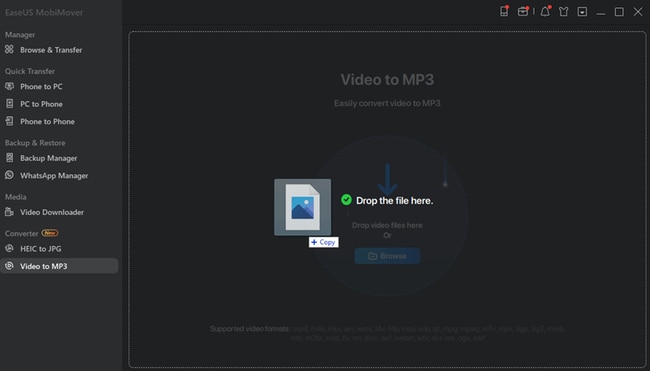
02Freemake Video Converter
Freemake Video Converter is the first 100% FREE MP3 converter for Windows 10 on this list! They keep the software updated from donations, so you can choose how much money you can spare for using the service! It’s a very simple software besides (as is shown in the image below). It does feature some video editing tools, but its main function is conversion (which includes video-to-audio conversion!)
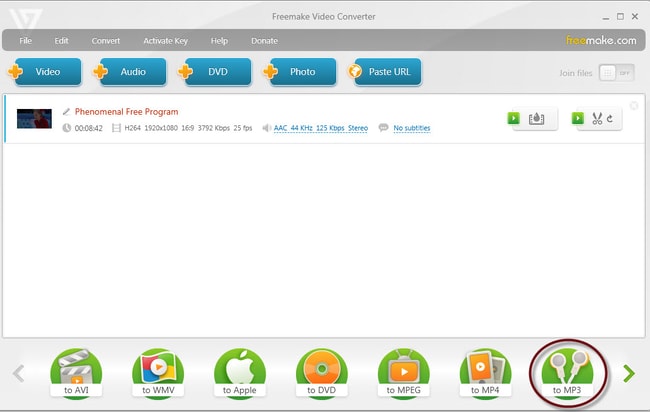
03VSDC
Much like Freemake, our next MP3 converter for Windows 10 and 11, called VSDC, is completely FREE — as they run primarily on donations. That does mean that it’s not the most advanced program though — evident from the rather old-school interface (shown in the image below). But, regardless of the lack of abundance in tools, it should function just fine as an audio-video-converter for Windows 10 (and vice versa.)
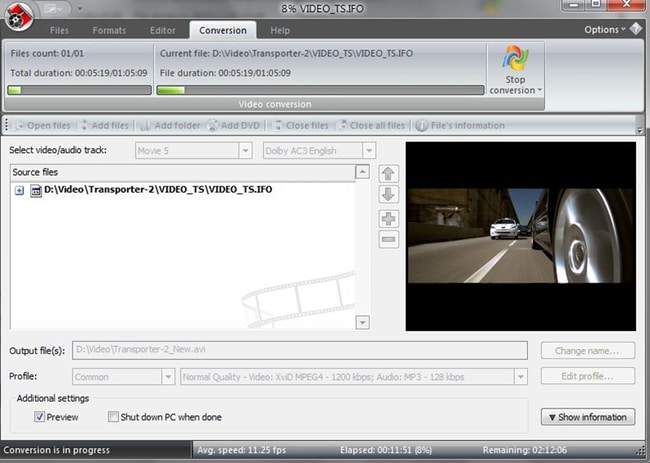
04Convertio.co
With Convertio.co, we break the mold a bit! This is not a software, but it does still work for Windows users — as it requires only that you have a working browser from which you can access the website (URL linked below!) As you can see from the image, it works much like most online MP3 converters — you upload a file from your desktop, wait for it to finish converting, and then download it!

05Free Convert
Free Convert is another online MP3 convert for Windows 10 users that would prefer not to download or install software. And, just like Covertio, it works by uploading the files you want to convert from your computer, waiting for the converters tool to finish converting it, and then downloading the finished product. It is, of course, FREE — but, similar to the first tool on this list, if you want to unlock some of its features, you’ll have to pay for the premium version.
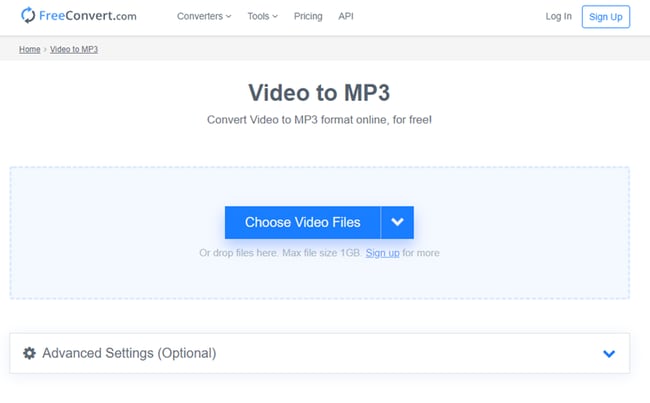
06DVDVideoSoft
With DVDVideoSoft, we’re back to an audio-video converter for Windows 10 that you have to download and install to work! It’s a FREEmium software too. That means that you’ll have to pay in order to unlock certain features. But, it works as a solid converter even without that.
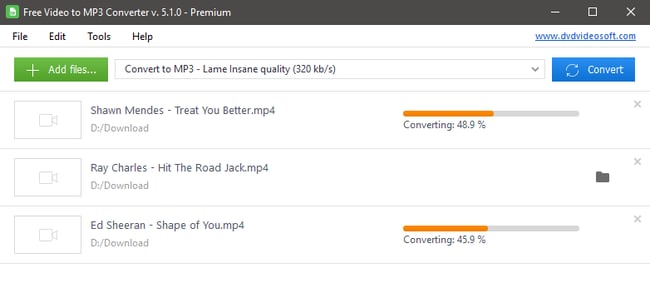
Part 2 6 Best Free and Paid Audio Editor for PC and Mac
For this next section, we turn our attention to a couple of MP3 editors (Windows 10 and Mac compatible.) This list will be a little more detailed than the first, since there are many differences between the tools that we’ll be introducing (both FREE and PAID), but it should give you a clear idea on which would work best for you.
01Wondershare Filmora
Operating System: Windows/Mac
Today’s Best Deals: US$89.99 (one-time)
The first on our list is the MP3 editor Windows 10 and Mac compatible, Wondershare Filmora Video Editor This is an advanced video editing software that you can use in order to work on just about any digital project — including, of course, editing your MP3 audio files.
Reasons to Buy:
● Lots of editing tools for MP3 files
● Exports high-quality end-products
● FREE to try, multiple-packages available
Reasons to Avoid:
● Premium software (subscription/one-time fee)
● Advanced tools might make it harder to get used to
● Download and installation is required
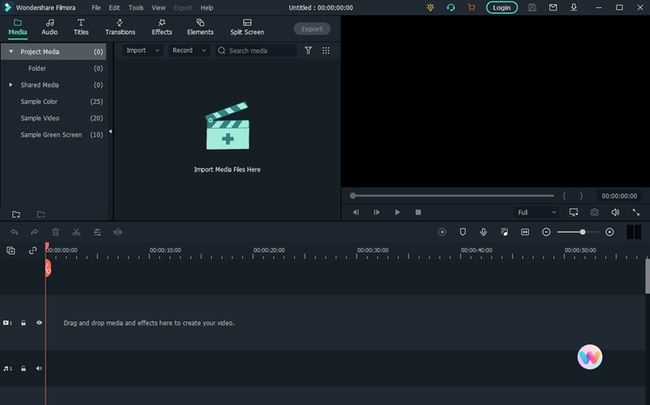
02Audacity
Operating System: Windows/Mac/Linux
Today’s Best Deals: FREE
Audacity is an MP3 editor (Windows 10, Max, and Linux compatible!) The difference between this tool and our first pick, Filmora Pro, is that Audacity is an open-source software — this means that it is free to use, but it also means that it might not be the most reliable as it is not updated quite as often.
Reasons to Buy:
● FREE, open-source software
● Advanced video and audio editing tools
● MP3 trimming/cutting feature
Reasons to Avoid:
● Not updated as often
● Confusing interface
● Difficult to use for beginners
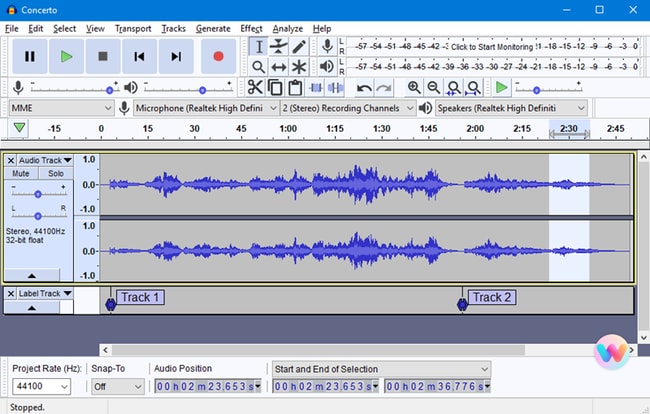
03Ashampoo Music Studio 8
Operating System: Windows
Today’s Best Deals: US$29.99
Next up is Ashampoo’s Music Studio 8! Here’s another freemium software that you can try for free — just to make sure it’s the tool that you’re looking for, but you’ll have to pay a price to use in its entirety! As you can see from the interface (shown in the image below) though, it’s quite the effective MP3 cutter for Windows 10 (among other things). So, if that’s what you’re looking for, then it’s a good choice to consider.
Reasons to Buy:
● Clean, modern interface
● Beginner-friendly editing tools
● One-time fee only
Reasons to Avoid:
● Freemium software (one-time payment required)
● Available only for Windows!
● Cannot support multiple tracks
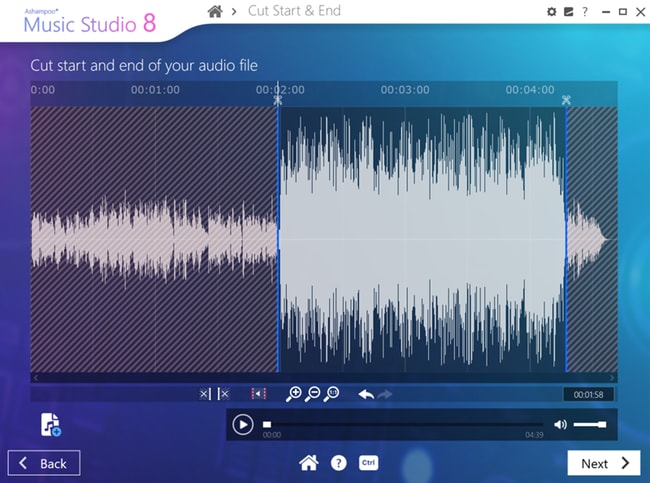
04Ocenaudio
Operating System: Windows/Mac/Linux
Today’s Best Deals: FREE
As far as audio-editing goes, you’re probably going to have a difficult time finding one that is as specialized as Ocenaudio. As you can probably guess from the name, it is, primarily, an audio editing tool. Making it a good choice if that’s all you’re looking for in a software, as it certainly keeps things simpler.
Reasons to Buy:
● Beginner-friendly audio editor
● Simple, clean interface
● Available for Windows/Mac/Linux
Reasons to Avoid:
● Older software
● Open-source, not updated as often
● Only an audio-editing software
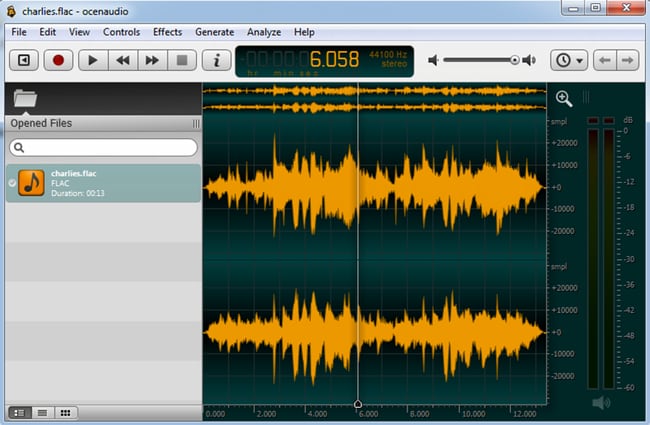
05Acoustica
Operating System: Windows
Today’s Best Deals: FREE
Our next pick is another open-source, MP3 editor for Windows 10. It’s called Acoustica. And, as you can see from the image shared below, it’s a fairly advanced audio editing tool. You should note, however, that the newer versions of this product are PAID (only older models are free), which is the topic of our discussion today.
Reasons to Buy:
● FREE, open-source product
● Advanced audio editing tools
● Advanced exporting formats
Reasons to Avoid:
● Older version of the software
● Updated version is PAID
● Available only for Windows
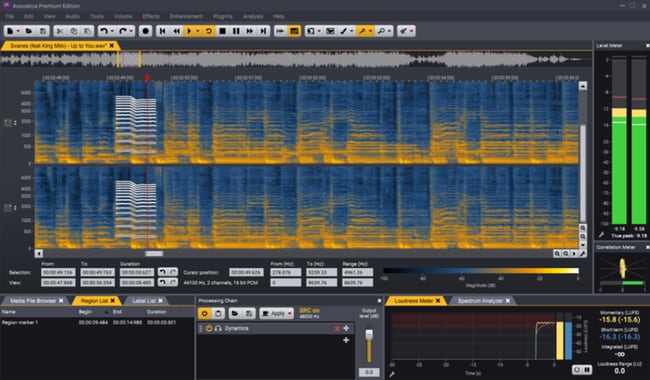
06Audiotool
Operating System: Windows/Mac/Linux
Today’s Best Deals: FREE
Finally, we finish things off with Audiotool, it’s certainly not your traditional audio editor (as is evident from the image shown below). But, the funky interface doesn’t mean that it won’t work for you! You never know, it might be exactly the kind that helps you zoom through your projects more quickly.
Reasons to Buy:
● FREE, open-source software
● Available for Windows/Mac/Linux users
● Advanced audio editing
Reasons to Avoid:
● Complex editing interface
● Requires internet to work (Linux)
● Not regularly updated
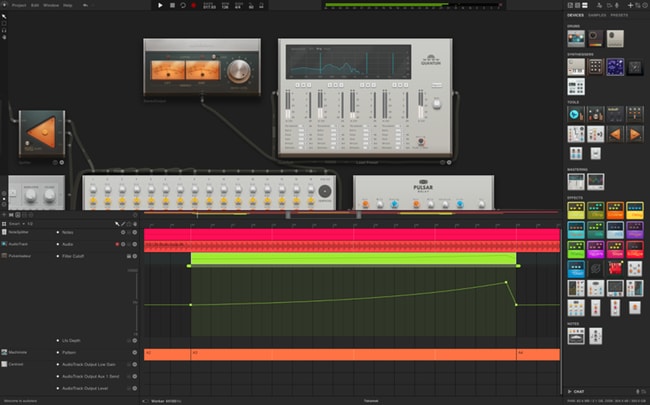
Part 3 5 MP3 Music Players for Windows 10/11 PC
The last of the lists in this article is a short one for the best MP3 players for Windows 10! This is a straightforward list, much like the first. And, we’ll be focusing on MP3 players for Windows 10 only (although some of these will work for Mac as well!)
01iTunes
Despite appearances, iTunes actually makes for a great MP3 player for Windows 10 users. After all, it’s interface is clean and it is regularly updated. So, you never have to deal with bugs! (And just in case you weren’t aware, you can add your own original audio to your iTunes library! So, it isn’t like you have to purchase media from the iTunes store just to listen to it.)

02Groove Music
Groove Music is a local Mp3 player for Windows 10 that you can download from the Microsoft App Store. It functions much like iTunes — in that you can add original music or audio to the app library (as well as purchase audio from the store — if that’s what you want.)
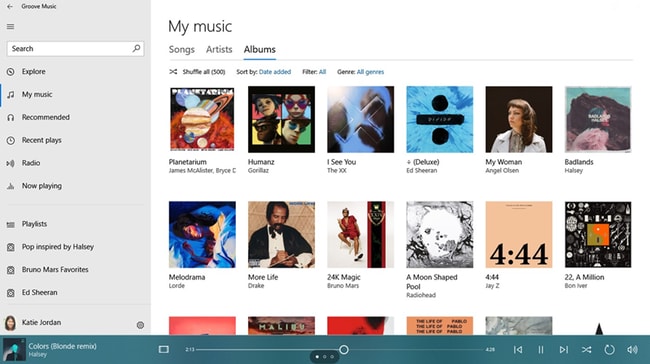
03Macgo Media Player
Our next pick, Macgo, is not strictly an MP3 player for Windows 10, but it can work for that purpose if that’s all you need it for. As a media player though, it does function as a video player as well. And, like our previous picks, it’s FREE so you don’t have to worry about paying in order to use it.
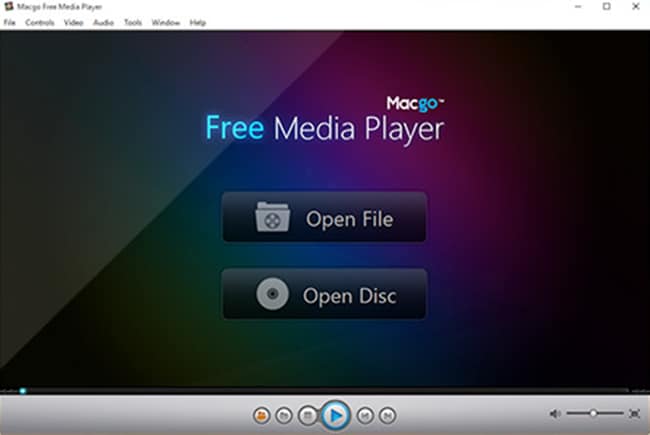
04PowerDVD
Again, our next pick is more of a general media player than strictly a MP3 Player for Windows 10 users, but it works just as well if all you’re looking for is to occasionally play the audio that you’ve converted or trimmed!
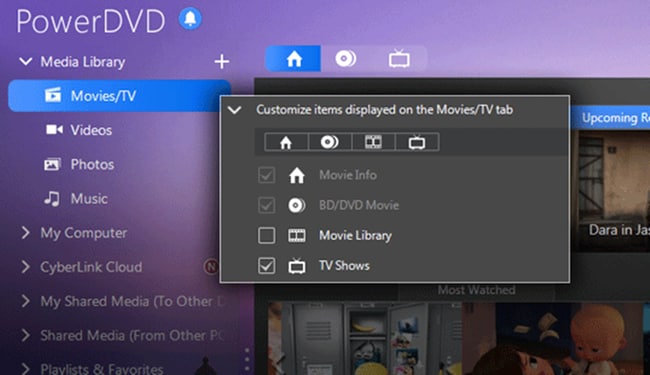
05Musicbee
We’re back to strictly MP3 players for Windows with Musicbee! The best part of this app is, undoubtedly, the fact that it has several view options. So, if you want, you have your audio playing from a mini audio player (rather than the full interface — as is shown below). It’s also useful for organizing your media collection!
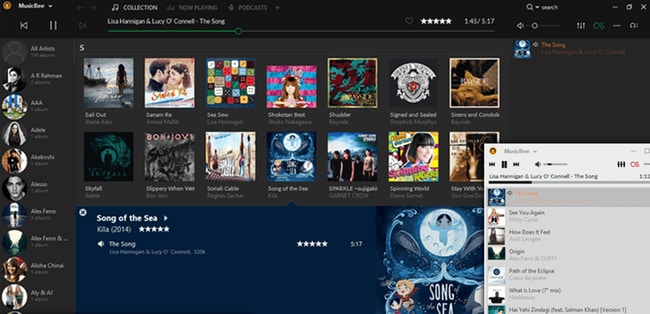
Part 4 How to Trim Mp3 on Windows 10 Easily
For this next part, we’re going to go over how you might go about trimming your converted audio with an MP3 cutter for Windows. (Note, a lot of the audio editors that we introduced in Part 2 of this article should be capable of this! And, they all work in much the same way.)
01Step 1: Launch MP3 Cutter for Windows 10! Start!
First, launch the MP3 cutter for Windows 10 that you downloaded.
For this example, we’ll be using Joyoshare Media Cutter. And, the way to start is to select the “Open” button, which will prompt you to choose which audio you want to cut.
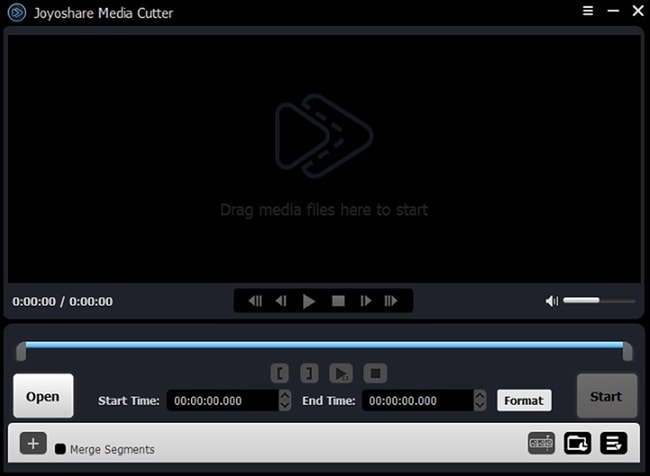
02Step 2: Choose Output Option
Next, select the output format that you want your audio to be exported in. (Most MP3 cutters for Windows 10 offers a variety for you to choose from).
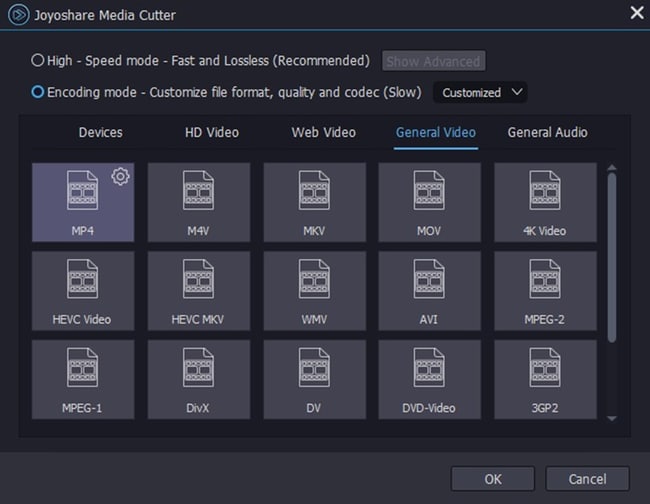
03Step 3: Select and Trim Mode!
Joyoshare has two methods of trimming available. The first is the select and trim mode, which is shown in the image below! For this, you use the sliders provider to select which portion of the audio you want to keep!

04Step 4: Use Encoder Trimmer
If you want a cleaner trim, you click the “Edit” icon beside the audio that you want to trim until you are moved to the encoder window (shown in the image below). This will allow you to pinpoint the best place to cut your audio!
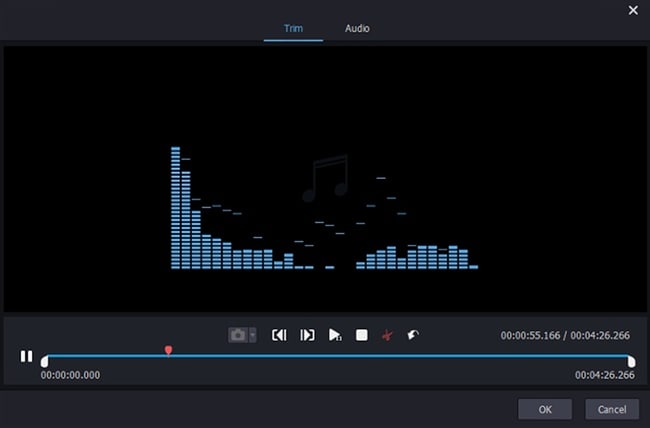
05Step 5: Save Your Audio!
Once you’re done trimming, remember to save!
With Joyoshare, the method of doing this is to select the “Start” button, which will prompt the trimmer to begin cutting the audio.
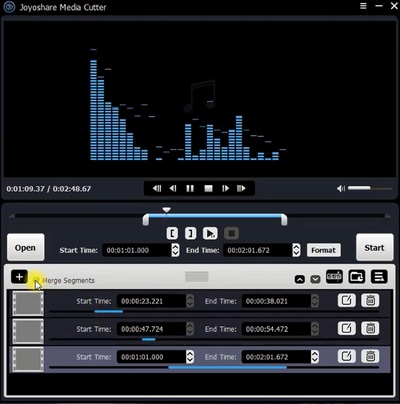
Key Takeaways from This Episode
● There are multiple MP3 converters for Windows and Mac that you can use in order to convert videos to an audio file that you can use for certain projects.
● Of course, if you want your finished project to sound clean, you’ll probably need a functional audio editor for that! And, for this matter, we recommend advanced video editing software like Filmora Pro.
● Just in case you want to review what your converted audio sounds like, consider one of the audio players that are available for Windows and Mac!
● If you find that your audio needs some trimming, a quick trim with an audio cutter should do the trick. It’s very simple to do!
We’ve got you there! In this article, not only have we compiled a list of the best FREE MP3 converters for Windows 10/11.
We’ve also included a list of the best MP3 editor Windows & Mac, and a list for the best MP3 player Windows & Mac! There’s even a quick tutorial in the end that can help you trim MP3 (Windows) files that you’ve converted so that you can more cleanly include it in your own project.
In this article
01 [6 Best Free MP3 Converter for Windows 10 / 11](#Part 1)
02 [6 Best Free and Paid Audio Editor for PC and Mac](#Part 2)
03 [5 MP3 Music Players for Windows 10/11 PC](#Part 3)
04 [How to Trim Mp3 on Windows 10 Easily](#Part 4)
Part 1 6 Best Free MP3 Converter for Windows 10 / 11
As promised, we start this off with the best audio converter (Windows 10/11) tools. We’ve decided to go very simple with this list, providing a brief description of all of the FREE MP3 Converters (Windows), a URL that will lead you to the website where you can get the converter, and an image that should show you how the converter’s interface looks like.
01EaseUs MobiMover
EaseUs MobiMover is an audio converter for Windows 10 and 11 that you can use in order to easily convert videos (in various formats) into MP3 (as is shown in the image below. It’s a FREEmium software though — which means that it’s use is limited until you purchase the paid version of the software.

02Freemake Video Converter
Freemake Video Converter is the first 100% FREE MP3 converter for Windows 10 on this list! They keep the software updated from donations, so you can choose how much money you can spare for using the service! It’s a very simple software besides (as is shown in the image below). It does feature some video editing tools, but its main function is conversion (which includes video-to-audio conversion!)

03VSDC
Much like Freemake, our next MP3 converter for Windows 10 and 11, called VSDC, is completely FREE — as they run primarily on donations. That does mean that it’s not the most advanced program though — evident from the rather old-school interface (shown in the image below). But, regardless of the lack of abundance in tools, it should function just fine as an audio-video-converter for Windows 10 (and vice versa.)

04Convertio.co
With Convertio.co, we break the mold a bit! This is not a software, but it does still work for Windows users — as it requires only that you have a working browser from which you can access the website (URL linked below!) As you can see from the image, it works much like most online MP3 converters — you upload a file from your desktop, wait for it to finish converting, and then download it!

05Free Convert
Free Convert is another online MP3 convert for Windows 10 users that would prefer not to download or install software. And, just like Covertio, it works by uploading the files you want to convert from your computer, waiting for the converters tool to finish converting it, and then downloading the finished product. It is, of course, FREE — but, similar to the first tool on this list, if you want to unlock some of its features, you’ll have to pay for the premium version.

06DVDVideoSoft
With DVDVideoSoft, we’re back to an audio-video converter for Windows 10 that you have to download and install to work! It’s a FREEmium software too. That means that you’ll have to pay in order to unlock certain features. But, it works as a solid converter even without that.

Part 2 6 Best Free and Paid Audio Editor for PC and Mac
For this next section, we turn our attention to a couple of MP3 editors (Windows 10 and Mac compatible.) This list will be a little more detailed than the first, since there are many differences between the tools that we’ll be introducing (both FREE and PAID), but it should give you a clear idea on which would work best for you.
01Wondershare Filmora
Operating System: Windows/Mac
Today’s Best Deals: US$89.99 (one-time)
The first on our list is the MP3 editor Windows 10 and Mac compatible, Wondershare Filmora Video Editor This is an advanced video editing software that you can use in order to work on just about any digital project — including, of course, editing your MP3 audio files.
Reasons to Buy:
● Lots of editing tools for MP3 files
● Exports high-quality end-products
● FREE to try, multiple-packages available
Reasons to Avoid:
● Premium software (subscription/one-time fee)
● Advanced tools might make it harder to get used to
● Download and installation is required

02Audacity
Operating System: Windows/Mac/Linux
Today’s Best Deals: FREE
Audacity is an MP3 editor (Windows 10, Max, and Linux compatible!) The difference between this tool and our first pick, Filmora Pro, is that Audacity is an open-source software — this means that it is free to use, but it also means that it might not be the most reliable as it is not updated quite as often.
Reasons to Buy:
● FREE, open-source software
● Advanced video and audio editing tools
● MP3 trimming/cutting feature
Reasons to Avoid:
● Not updated as often
● Confusing interface
● Difficult to use for beginners

03Ashampoo Music Studio 8
Operating System: Windows
Today’s Best Deals: US$29.99
Next up is Ashampoo’s Music Studio 8! Here’s another freemium software that you can try for free — just to make sure it’s the tool that you’re looking for, but you’ll have to pay a price to use in its entirety! As you can see from the interface (shown in the image below) though, it’s quite the effective MP3 cutter for Windows 10 (among other things). So, if that’s what you’re looking for, then it’s a good choice to consider.
Reasons to Buy:
● Clean, modern interface
● Beginner-friendly editing tools
● One-time fee only
Reasons to Avoid:
● Freemium software (one-time payment required)
● Available only for Windows!
● Cannot support multiple tracks

04Ocenaudio
Operating System: Windows/Mac/Linux
Today’s Best Deals: FREE
As far as audio-editing goes, you’re probably going to have a difficult time finding one that is as specialized as Ocenaudio. As you can probably guess from the name, it is, primarily, an audio editing tool. Making it a good choice if that’s all you’re looking for in a software, as it certainly keeps things simpler.
Reasons to Buy:
● Beginner-friendly audio editor
● Simple, clean interface
● Available for Windows/Mac/Linux
Reasons to Avoid:
● Older software
● Open-source, not updated as often
● Only an audio-editing software

05Acoustica
Operating System: Windows
Today’s Best Deals: FREE
Our next pick is another open-source, MP3 editor for Windows 10. It’s called Acoustica. And, as you can see from the image shared below, it’s a fairly advanced audio editing tool. You should note, however, that the newer versions of this product are PAID (only older models are free), which is the topic of our discussion today.
Reasons to Buy:
● FREE, open-source product
● Advanced audio editing tools
● Advanced exporting formats
Reasons to Avoid:
● Older version of the software
● Updated version is PAID
● Available only for Windows

06Audiotool
Operating System: Windows/Mac/Linux
Today’s Best Deals: FREE
Finally, we finish things off with Audiotool, it’s certainly not your traditional audio editor (as is evident from the image shown below). But, the funky interface doesn’t mean that it won’t work for you! You never know, it might be exactly the kind that helps you zoom through your projects more quickly.
Reasons to Buy:
● FREE, open-source software
● Available for Windows/Mac/Linux users
● Advanced audio editing
Reasons to Avoid:
● Complex editing interface
● Requires internet to work (Linux)
● Not regularly updated

Part 3 5 MP3 Music Players for Windows 10/11 PC
The last of the lists in this article is a short one for the best MP3 players for Windows 10! This is a straightforward list, much like the first. And, we’ll be focusing on MP3 players for Windows 10 only (although some of these will work for Mac as well!)
01iTunes
Despite appearances, iTunes actually makes for a great MP3 player for Windows 10 users. After all, it’s interface is clean and it is regularly updated. So, you never have to deal with bugs! (And just in case you weren’t aware, you can add your own original audio to your iTunes library! So, it isn’t like you have to purchase media from the iTunes store just to listen to it.)

02Groove Music
Groove Music is a local Mp3 player for Windows 10 that you can download from the Microsoft App Store. It functions much like iTunes — in that you can add original music or audio to the app library (as well as purchase audio from the store — if that’s what you want.)

03Macgo Media Player
Our next pick, Macgo, is not strictly an MP3 player for Windows 10, but it can work for that purpose if that’s all you need it for. As a media player though, it does function as a video player as well. And, like our previous picks, it’s FREE so you don’t have to worry about paying in order to use it.

04PowerDVD
Again, our next pick is more of a general media player than strictly a MP3 Player for Windows 10 users, but it works just as well if all you’re looking for is to occasionally play the audio that you’ve converted or trimmed!

05Musicbee
We’re back to strictly MP3 players for Windows with Musicbee! The best part of this app is, undoubtedly, the fact that it has several view options. So, if you want, you have your audio playing from a mini audio player (rather than the full interface — as is shown below). It’s also useful for organizing your media collection!

Part 4 How to Trim Mp3 on Windows 10 Easily
For this next part, we’re going to go over how you might go about trimming your converted audio with an MP3 cutter for Windows. (Note, a lot of the audio editors that we introduced in Part 2 of this article should be capable of this! And, they all work in much the same way.)
01Step 1: Launch MP3 Cutter for Windows 10! Start!
First, launch the MP3 cutter for Windows 10 that you downloaded.
For this example, we’ll be using Joyoshare Media Cutter. And, the way to start is to select the “Open” button, which will prompt you to choose which audio you want to cut.

02Step 2: Choose Output Option
Next, select the output format that you want your audio to be exported in. (Most MP3 cutters for Windows 10 offers a variety for you to choose from).

03Step 3: Select and Trim Mode!
Joyoshare has two methods of trimming available. The first is the select and trim mode, which is shown in the image below! For this, you use the sliders provider to select which portion of the audio you want to keep!

04Step 4: Use Encoder Trimmer
If you want a cleaner trim, you click the “Edit” icon beside the audio that you want to trim until you are moved to the encoder window (shown in the image below). This will allow you to pinpoint the best place to cut your audio!

05Step 5: Save Your Audio!
Once you’re done trimming, remember to save!
With Joyoshare, the method of doing this is to select the “Start” button, which will prompt the trimmer to begin cutting the audio.

Key Takeaways from This Episode
● There are multiple MP3 converters for Windows and Mac that you can use in order to convert videos to an audio file that you can use for certain projects.
● Of course, if you want your finished project to sound clean, you’ll probably need a functional audio editor for that! And, for this matter, we recommend advanced video editing software like Filmora Pro.
● Just in case you want to review what your converted audio sounds like, consider one of the audio players that are available for Windows and Mac!
● If you find that your audio needs some trimming, a quick trim with an audio cutter should do the trick. It’s very simple to do!
We’ve got you there! In this article, not only have we compiled a list of the best FREE MP3 converters for Windows 10/11.
We’ve also included a list of the best MP3 editor Windows & Mac, and a list for the best MP3 player Windows & Mac! There’s even a quick tutorial in the end that can help you trim MP3 (Windows) files that you’ve converted so that you can more cleanly include it in your own project.
In this article
01 [6 Best Free MP3 Converter for Windows 10 / 11](#Part 1)
02 [6 Best Free and Paid Audio Editor for PC and Mac](#Part 2)
03 [5 MP3 Music Players for Windows 10/11 PC](#Part 3)
04 [How to Trim Mp3 on Windows 10 Easily](#Part 4)
Part 1 6 Best Free MP3 Converter for Windows 10 / 11
As promised, we start this off with the best audio converter (Windows 10/11) tools. We’ve decided to go very simple with this list, providing a brief description of all of the FREE MP3 Converters (Windows), a URL that will lead you to the website where you can get the converter, and an image that should show you how the converter’s interface looks like.
01EaseUs MobiMover
EaseUs MobiMover is an audio converter for Windows 10 and 11 that you can use in order to easily convert videos (in various formats) into MP3 (as is shown in the image below. It’s a FREEmium software though — which means that it’s use is limited until you purchase the paid version of the software.

02Freemake Video Converter
Freemake Video Converter is the first 100% FREE MP3 converter for Windows 10 on this list! They keep the software updated from donations, so you can choose how much money you can spare for using the service! It’s a very simple software besides (as is shown in the image below). It does feature some video editing tools, but its main function is conversion (which includes video-to-audio conversion!)

03VSDC
Much like Freemake, our next MP3 converter for Windows 10 and 11, called VSDC, is completely FREE — as they run primarily on donations. That does mean that it’s not the most advanced program though — evident from the rather old-school interface (shown in the image below). But, regardless of the lack of abundance in tools, it should function just fine as an audio-video-converter for Windows 10 (and vice versa.)

04Convertio.co
With Convertio.co, we break the mold a bit! This is not a software, but it does still work for Windows users — as it requires only that you have a working browser from which you can access the website (URL linked below!) As you can see from the image, it works much like most online MP3 converters — you upload a file from your desktop, wait for it to finish converting, and then download it!

05Free Convert
Free Convert is another online MP3 convert for Windows 10 users that would prefer not to download or install software. And, just like Covertio, it works by uploading the files you want to convert from your computer, waiting for the converters tool to finish converting it, and then downloading the finished product. It is, of course, FREE — but, similar to the first tool on this list, if you want to unlock some of its features, you’ll have to pay for the premium version.

06DVDVideoSoft
With DVDVideoSoft, we’re back to an audio-video converter for Windows 10 that you have to download and install to work! It’s a FREEmium software too. That means that you’ll have to pay in order to unlock certain features. But, it works as a solid converter even without that.

Part 2 6 Best Free and Paid Audio Editor for PC and Mac
For this next section, we turn our attention to a couple of MP3 editors (Windows 10 and Mac compatible.) This list will be a little more detailed than the first, since there are many differences between the tools that we’ll be introducing (both FREE and PAID), but it should give you a clear idea on which would work best for you.
01Wondershare Filmora
Operating System: Windows/Mac
Today’s Best Deals: US$89.99 (one-time)
The first on our list is the MP3 editor Windows 10 and Mac compatible, Wondershare Filmora Video Editor This is an advanced video editing software that you can use in order to work on just about any digital project — including, of course, editing your MP3 audio files.
Reasons to Buy:
● Lots of editing tools for MP3 files
● Exports high-quality end-products
● FREE to try, multiple-packages available
Reasons to Avoid:
● Premium software (subscription/one-time fee)
● Advanced tools might make it harder to get used to
● Download and installation is required

02Audacity
Operating System: Windows/Mac/Linux
Today’s Best Deals: FREE
Audacity is an MP3 editor (Windows 10, Max, and Linux compatible!) The difference between this tool and our first pick, Filmora Pro, is that Audacity is an open-source software — this means that it is free to use, but it also means that it might not be the most reliable as it is not updated quite as often.
Reasons to Buy:
● FREE, open-source software
● Advanced video and audio editing tools
● MP3 trimming/cutting feature
Reasons to Avoid:
● Not updated as often
● Confusing interface
● Difficult to use for beginners

03Ashampoo Music Studio 8
Operating System: Windows
Today’s Best Deals: US$29.99
Next up is Ashampoo’s Music Studio 8! Here’s another freemium software that you can try for free — just to make sure it’s the tool that you’re looking for, but you’ll have to pay a price to use in its entirety! As you can see from the interface (shown in the image below) though, it’s quite the effective MP3 cutter for Windows 10 (among other things). So, if that’s what you’re looking for, then it’s a good choice to consider.
Reasons to Buy:
● Clean, modern interface
● Beginner-friendly editing tools
● One-time fee only
Reasons to Avoid:
● Freemium software (one-time payment required)
● Available only for Windows!
● Cannot support multiple tracks

04Ocenaudio
Operating System: Windows/Mac/Linux
Today’s Best Deals: FREE
As far as audio-editing goes, you’re probably going to have a difficult time finding one that is as specialized as Ocenaudio. As you can probably guess from the name, it is, primarily, an audio editing tool. Making it a good choice if that’s all you’re looking for in a software, as it certainly keeps things simpler.
Reasons to Buy:
● Beginner-friendly audio editor
● Simple, clean interface
● Available for Windows/Mac/Linux
Reasons to Avoid:
● Older software
● Open-source, not updated as often
● Only an audio-editing software

05Acoustica
Operating System: Windows
Today’s Best Deals: FREE
Our next pick is another open-source, MP3 editor for Windows 10. It’s called Acoustica. And, as you can see from the image shared below, it’s a fairly advanced audio editing tool. You should note, however, that the newer versions of this product are PAID (only older models are free), which is the topic of our discussion today.
Reasons to Buy:
● FREE, open-source product
● Advanced audio editing tools
● Advanced exporting formats
Reasons to Avoid:
● Older version of the software
● Updated version is PAID
● Available only for Windows

06Audiotool
Operating System: Windows/Mac/Linux
Today’s Best Deals: FREE
Finally, we finish things off with Audiotool, it’s certainly not your traditional audio editor (as is evident from the image shown below). But, the funky interface doesn’t mean that it won’t work for you! You never know, it might be exactly the kind that helps you zoom through your projects more quickly.
Reasons to Buy:
● FREE, open-source software
● Available for Windows/Mac/Linux users
● Advanced audio editing
Reasons to Avoid:
● Complex editing interface
● Requires internet to work (Linux)
● Not regularly updated

Part 3 5 MP3 Music Players for Windows 10/11 PC
The last of the lists in this article is a short one for the best MP3 players for Windows 10! This is a straightforward list, much like the first. And, we’ll be focusing on MP3 players for Windows 10 only (although some of these will work for Mac as well!)
01iTunes
Despite appearances, iTunes actually makes for a great MP3 player for Windows 10 users. After all, it’s interface is clean and it is regularly updated. So, you never have to deal with bugs! (And just in case you weren’t aware, you can add your own original audio to your iTunes library! So, it isn’t like you have to purchase media from the iTunes store just to listen to it.)

02Groove Music
Groove Music is a local Mp3 player for Windows 10 that you can download from the Microsoft App Store. It functions much like iTunes — in that you can add original music or audio to the app library (as well as purchase audio from the store — if that’s what you want.)

03Macgo Media Player
Our next pick, Macgo, is not strictly an MP3 player for Windows 10, but it can work for that purpose if that’s all you need it for. As a media player though, it does function as a video player as well. And, like our previous picks, it’s FREE so you don’t have to worry about paying in order to use it.

04PowerDVD
Again, our next pick is more of a general media player than strictly a MP3 Player for Windows 10 users, but it works just as well if all you’re looking for is to occasionally play the audio that you’ve converted or trimmed!

05Musicbee
We’re back to strictly MP3 players for Windows with Musicbee! The best part of this app is, undoubtedly, the fact that it has several view options. So, if you want, you have your audio playing from a mini audio player (rather than the full interface — as is shown below). It’s also useful for organizing your media collection!

Part 4 How to Trim Mp3 on Windows 10 Easily
For this next part, we’re going to go over how you might go about trimming your converted audio with an MP3 cutter for Windows. (Note, a lot of the audio editors that we introduced in Part 2 of this article should be capable of this! And, they all work in much the same way.)
01Step 1: Launch MP3 Cutter for Windows 10! Start!
First, launch the MP3 cutter for Windows 10 that you downloaded.
For this example, we’ll be using Joyoshare Media Cutter. And, the way to start is to select the “Open” button, which will prompt you to choose which audio you want to cut.

02Step 2: Choose Output Option
Next, select the output format that you want your audio to be exported in. (Most MP3 cutters for Windows 10 offers a variety for you to choose from).

03Step 3: Select and Trim Mode!
Joyoshare has two methods of trimming available. The first is the select and trim mode, which is shown in the image below! For this, you use the sliders provider to select which portion of the audio you want to keep!

04Step 4: Use Encoder Trimmer
If you want a cleaner trim, you click the “Edit” icon beside the audio that you want to trim until you are moved to the encoder window (shown in the image below). This will allow you to pinpoint the best place to cut your audio!

05Step 5: Save Your Audio!
Once you’re done trimming, remember to save!
With Joyoshare, the method of doing this is to select the “Start” button, which will prompt the trimmer to begin cutting the audio.

Key Takeaways from This Episode
● There are multiple MP3 converters for Windows and Mac that you can use in order to convert videos to an audio file that you can use for certain projects.
● Of course, if you want your finished project to sound clean, you’ll probably need a functional audio editor for that! And, for this matter, we recommend advanced video editing software like Filmora Pro.
● Just in case you want to review what your converted audio sounds like, consider one of the audio players that are available for Windows and Mac!
● If you find that your audio needs some trimming, a quick trim with an audio cutter should do the trick. It’s very simple to do!
We’ve got you there! In this article, not only have we compiled a list of the best FREE MP3 converters for Windows 10/11.
We’ve also included a list of the best MP3 editor Windows & Mac, and a list for the best MP3 player Windows & Mac! There’s even a quick tutorial in the end that can help you trim MP3 (Windows) files that you’ve converted so that you can more cleanly include it in your own project.
In this article
01 [6 Best Free MP3 Converter for Windows 10 / 11](#Part 1)
02 [6 Best Free and Paid Audio Editor for PC and Mac](#Part 2)
03 [5 MP3 Music Players for Windows 10/11 PC](#Part 3)
04 [How to Trim Mp3 on Windows 10 Easily](#Part 4)
Part 1 6 Best Free MP3 Converter for Windows 10 / 11
As promised, we start this off with the best audio converter (Windows 10/11) tools. We’ve decided to go very simple with this list, providing a brief description of all of the FREE MP3 Converters (Windows), a URL that will lead you to the website where you can get the converter, and an image that should show you how the converter’s interface looks like.
01EaseUs MobiMover
EaseUs MobiMover is an audio converter for Windows 10 and 11 that you can use in order to easily convert videos (in various formats) into MP3 (as is shown in the image below. It’s a FREEmium software though — which means that it’s use is limited until you purchase the paid version of the software.

02Freemake Video Converter
Freemake Video Converter is the first 100% FREE MP3 converter for Windows 10 on this list! They keep the software updated from donations, so you can choose how much money you can spare for using the service! It’s a very simple software besides (as is shown in the image below). It does feature some video editing tools, but its main function is conversion (which includes video-to-audio conversion!)

03VSDC
Much like Freemake, our next MP3 converter for Windows 10 and 11, called VSDC, is completely FREE — as they run primarily on donations. That does mean that it’s not the most advanced program though — evident from the rather old-school interface (shown in the image below). But, regardless of the lack of abundance in tools, it should function just fine as an audio-video-converter for Windows 10 (and vice versa.)

04Convertio.co
With Convertio.co, we break the mold a bit! This is not a software, but it does still work for Windows users — as it requires only that you have a working browser from which you can access the website (URL linked below!) As you can see from the image, it works much like most online MP3 converters — you upload a file from your desktop, wait for it to finish converting, and then download it!

05Free Convert
Free Convert is another online MP3 convert for Windows 10 users that would prefer not to download or install software. And, just like Covertio, it works by uploading the files you want to convert from your computer, waiting for the converters tool to finish converting it, and then downloading the finished product. It is, of course, FREE — but, similar to the first tool on this list, if you want to unlock some of its features, you’ll have to pay for the premium version.

06DVDVideoSoft
With DVDVideoSoft, we’re back to an audio-video converter for Windows 10 that you have to download and install to work! It’s a FREEmium software too. That means that you’ll have to pay in order to unlock certain features. But, it works as a solid converter even without that.

Part 2 6 Best Free and Paid Audio Editor for PC and Mac
For this next section, we turn our attention to a couple of MP3 editors (Windows 10 and Mac compatible.) This list will be a little more detailed than the first, since there are many differences between the tools that we’ll be introducing (both FREE and PAID), but it should give you a clear idea on which would work best for you.
01Wondershare Filmora
Operating System: Windows/Mac
Today’s Best Deals: US$89.99 (one-time)
The first on our list is the MP3 editor Windows 10 and Mac compatible, Wondershare Filmora Video Editor This is an advanced video editing software that you can use in order to work on just about any digital project — including, of course, editing your MP3 audio files.
Reasons to Buy:
● Lots of editing tools for MP3 files
● Exports high-quality end-products
● FREE to try, multiple-packages available
Reasons to Avoid:
● Premium software (subscription/one-time fee)
● Advanced tools might make it harder to get used to
● Download and installation is required

02Audacity
Operating System: Windows/Mac/Linux
Today’s Best Deals: FREE
Audacity is an MP3 editor (Windows 10, Max, and Linux compatible!) The difference between this tool and our first pick, Filmora Pro, is that Audacity is an open-source software — this means that it is free to use, but it also means that it might not be the most reliable as it is not updated quite as often.
Reasons to Buy:
● FREE, open-source software
● Advanced video and audio editing tools
● MP3 trimming/cutting feature
Reasons to Avoid:
● Not updated as often
● Confusing interface
● Difficult to use for beginners

03Ashampoo Music Studio 8
Operating System: Windows
Today’s Best Deals: US$29.99
Next up is Ashampoo’s Music Studio 8! Here’s another freemium software that you can try for free — just to make sure it’s the tool that you’re looking for, but you’ll have to pay a price to use in its entirety! As you can see from the interface (shown in the image below) though, it’s quite the effective MP3 cutter for Windows 10 (among other things). So, if that’s what you’re looking for, then it’s a good choice to consider.
Reasons to Buy:
● Clean, modern interface
● Beginner-friendly editing tools
● One-time fee only
Reasons to Avoid:
● Freemium software (one-time payment required)
● Available only for Windows!
● Cannot support multiple tracks

04Ocenaudio
Operating System: Windows/Mac/Linux
Today’s Best Deals: FREE
As far as audio-editing goes, you’re probably going to have a difficult time finding one that is as specialized as Ocenaudio. As you can probably guess from the name, it is, primarily, an audio editing tool. Making it a good choice if that’s all you’re looking for in a software, as it certainly keeps things simpler.
Reasons to Buy:
● Beginner-friendly audio editor
● Simple, clean interface
● Available for Windows/Mac/Linux
Reasons to Avoid:
● Older software
● Open-source, not updated as often
● Only an audio-editing software

05Acoustica
Operating System: Windows
Today’s Best Deals: FREE
Our next pick is another open-source, MP3 editor for Windows 10. It’s called Acoustica. And, as you can see from the image shared below, it’s a fairly advanced audio editing tool. You should note, however, that the newer versions of this product are PAID (only older models are free), which is the topic of our discussion today.
Reasons to Buy:
● FREE, open-source product
● Advanced audio editing tools
● Advanced exporting formats
Reasons to Avoid:
● Older version of the software
● Updated version is PAID
● Available only for Windows

06Audiotool
Operating System: Windows/Mac/Linux
Today’s Best Deals: FREE
Finally, we finish things off with Audiotool, it’s certainly not your traditional audio editor (as is evident from the image shown below). But, the funky interface doesn’t mean that it won’t work for you! You never know, it might be exactly the kind that helps you zoom through your projects more quickly.
Reasons to Buy:
● FREE, open-source software
● Available for Windows/Mac/Linux users
● Advanced audio editing
Reasons to Avoid:
● Complex editing interface
● Requires internet to work (Linux)
● Not regularly updated

Part 3 5 MP3 Music Players for Windows 10/11 PC
The last of the lists in this article is a short one for the best MP3 players for Windows 10! This is a straightforward list, much like the first. And, we’ll be focusing on MP3 players for Windows 10 only (although some of these will work for Mac as well!)
01iTunes
Despite appearances, iTunes actually makes for a great MP3 player for Windows 10 users. After all, it’s interface is clean and it is regularly updated. So, you never have to deal with bugs! (And just in case you weren’t aware, you can add your own original audio to your iTunes library! So, it isn’t like you have to purchase media from the iTunes store just to listen to it.)

02Groove Music
Groove Music is a local Mp3 player for Windows 10 that you can download from the Microsoft App Store. It functions much like iTunes — in that you can add original music or audio to the app library (as well as purchase audio from the store — if that’s what you want.)

03Macgo Media Player
Our next pick, Macgo, is not strictly an MP3 player for Windows 10, but it can work for that purpose if that’s all you need it for. As a media player though, it does function as a video player as well. And, like our previous picks, it’s FREE so you don’t have to worry about paying in order to use it.

04PowerDVD
Again, our next pick is more of a general media player than strictly a MP3 Player for Windows 10 users, but it works just as well if all you’re looking for is to occasionally play the audio that you’ve converted or trimmed!

05Musicbee
We’re back to strictly MP3 players for Windows with Musicbee! The best part of this app is, undoubtedly, the fact that it has several view options. So, if you want, you have your audio playing from a mini audio player (rather than the full interface — as is shown below). It’s also useful for organizing your media collection!

Part 4 How to Trim Mp3 on Windows 10 Easily
For this next part, we’re going to go over how you might go about trimming your converted audio with an MP3 cutter for Windows. (Note, a lot of the audio editors that we introduced in Part 2 of this article should be capable of this! And, they all work in much the same way.)
01Step 1: Launch MP3 Cutter for Windows 10! Start!
First, launch the MP3 cutter for Windows 10 that you downloaded.
For this example, we’ll be using Joyoshare Media Cutter. And, the way to start is to select the “Open” button, which will prompt you to choose which audio you want to cut.

02Step 2: Choose Output Option
Next, select the output format that you want your audio to be exported in. (Most MP3 cutters for Windows 10 offers a variety for you to choose from).

03Step 3: Select and Trim Mode!
Joyoshare has two methods of trimming available. The first is the select and trim mode, which is shown in the image below! For this, you use the sliders provider to select which portion of the audio you want to keep!

04Step 4: Use Encoder Trimmer
If you want a cleaner trim, you click the “Edit” icon beside the audio that you want to trim until you are moved to the encoder window (shown in the image below). This will allow you to pinpoint the best place to cut your audio!

05Step 5: Save Your Audio!
Once you’re done trimming, remember to save!
With Joyoshare, the method of doing this is to select the “Start” button, which will prompt the trimmer to begin cutting the audio.

Key Takeaways from This Episode
● There are multiple MP3 converters for Windows and Mac that you can use in order to convert videos to an audio file that you can use for certain projects.
● Of course, if you want your finished project to sound clean, you’ll probably need a functional audio editor for that! And, for this matter, we recommend advanced video editing software like Filmora Pro.
● Just in case you want to review what your converted audio sounds like, consider one of the audio players that are available for Windows and Mac!
● If you find that your audio needs some trimming, a quick trim with an audio cutter should do the trick. It’s very simple to do!
Also read:
- Compressor for FCPX Best Practices for Exporting and Delivering Videos for 2024
- 2024 Approved Free and Fantastic Top MPEG Video Splitter Tools
- The Best of the Best 10 Top-Notch Online Waveform Generators
- Updated 2024 Approved Glitch Video Editing Made Easy Best Tools for Windows, Mac, and Online
- Bring Your Videos to Life Best Text Animation Apps for Phones
- FLAC Converter Reviews Discover the Perfect One for You
- New Free Video Watermark Software Our Top Recommendations
- 2024 Approved Elevate Your Sound 10 Best Professional Audio Editing Programs
- In 2024, Facebook MP3 Converter Top 8 Online Options
- Elevate Your Video Editing Skills Mastering 3D Effect
- Updated Online Video Reverse Software Top Picks
- New In 2024, Wav Converter 101 A Step-by-Step Tutorial
- Updated The Art of Audio Conversion Turning Text Into Engaging MP3s
- Top TikTok Watermark Removal Tools to Use Right Now
- New Get Ready to Distort Top Free Online Glitch Generators for 2024
- Updated In 2024, Say Goodbye to Upside-Down Videos A Quick Fix Guide
- Updated 3D Animation on a Budget Free and Affordable Software Options You Need to Know for 2024
- Updated The Best Free Online Movie Editing Solutions for 2024
- New 2024 Approved Before You Learn M4R Converter Some Things You Should Know
- Updated Cut Costs, Not Quality Get Final Cut Pro with Education Discounts
- Updated In 2024, Maximize Your GoPro Footage Effortless Video Editing on MacBook with Quik
- 2024 Approved Simplify Your Workflow Top Aspect Ratio Calculators Online
- The Ultimate Guide to Ken Burns Effect in Final Cut Pro Tips, Tricks, and Best Practices
- New 2024 Approved Face Off The Top Face Swap Apps for iPhone and Android Users
- Updated Unleash Your Creativity 20 Best Adobe Premiere Title Templates Free Download for 2024
- New In 2024, Move Over WMM Discover the Best Free and Paid Video Editors
- 2024 Approved Online Face Creation Studios No Cost, No Download
- Updated In 2024, S Best Free Video Editors for Recording Gameplay
- Updated The Best Free AVI Video Rotators A Comprehensive Multi-Platform Review
- New In 2024, Filmora 13 Free Download Professional Video Editing Software
- Updated Windows 8 FLV Editor A User-Friendly Video Editing Solution for 2024
- New Video Advertising Trailer Production Platforms
- New Best Video Editing Software for Musicians and Content Creators 2024
- New In 2024, Top 10 WebM to MP4 Conversion Tools You Need to Know
- 2024 Approved Google Plays Hidden Gems Underrated but Amazing Apps
- Windows Video Editing Essentials Adding 3D Effects Like a Pro for 2024
- New In 2024, The Best Free Audio Recording Software In-Depth Reviews
- In 2024, Get Creative with Free Sound Effects A Beginners Guide to Final Cut Pro
- New In 2024, Vegas Pro for Mac 10 Competitors You Should Consider (Free & Paid)
- Updated Mobile Video Magic Top Apps for Animated Text Overlays for 2024
- New 2024 Approved Top-Rated Video Combiner Software with No Watermarks
- 8 Solutions to Solve YouTube App Crashing on Honor Magic 6 Pro | Dr.fone
- In 2024, Best 3 Software to Transfer Files to/from Your Oppo Reno 10 Pro 5G via a USB Cable | Dr.fone
- How To Get Out of Recovery on iPhone 11 Pro? | Dr.fone
- Best Free Online Video Cutters Top Picks for 2024
- Apple ID Unlock From Apple iPhone XS Max? How to Fix it?
- How to Transfer Data from Tecno Spark 20C to BlackBerry | Dr.fone
- 3 Best Tools to Hard Reset Nokia 130 Music | Dr.fone
- Updated Free Filmora No Crack, No Risk, Just Genuine Methods for 2024
- In 2024, How to Bypass Google FRP Lock on Asus ROG Phone 7 Devices
- How To Unbrick a Dead Motorola Defy 2 | Dr.fone
- My Videos Arent Playing on Xiaomi 13T – What Can I Do? | Dr.fone
- In 2024, Ultimate Guide to Catch the Regional-Located Pokemon For Oppo A79 5G | Dr.fone
- How to convert AVCHD MTS to MP4 for Xiaomi Redmi A2?
- Ultimate Guide to Catch the Regional-Located Pokemon For Poco C50 | Dr.fone
- Top 10 Fingerprint Lock Apps to Lock Your Nubia Red Magic 9 Pro+ Phone
- In 2024, How to Track a Lost Sony Xperia 5 V for Free? | Dr.fone
- In 2024, Best 3 Tecno Spark 10 Pro Emulator for Mac to Run Your Wanted Android Apps | Dr.fone
- How to Mirror Apple iPhone 11 Pro Max to Mac? | Dr.fone
- Full Guide to Hard Reset Your Honor Play 8T | Dr.fone
- Pokémon Go Cooldown Chart On Asus ROG Phone 7 Ultimate | Dr.fone
- Updated How To Blur Background in Adobe Premiere Pro Detailed Guide for 2024
- How to Fix Unfortunately, Contacts Has Stopped Error on Vivo V30 Pro | Dr.fone
- In 2024, Top 12 Prominent Samsung Galaxy A15 4G Fingerprint Not Working Solutions
- In 2024, How to Delete iCloud Account From Apple iPhone 11 Pro Max without Password?
- 2024 Approved Create Cartoons Like a Pro Top 10 Tools for PC and Web
- 8 Ultimate Fixes for Google Play Your Honor 90 GT Isnt Compatible | Dr.fone
- In 2024, Full Guide to Fix iToolab AnyGO Not Working On Motorola Moto G73 5G | Dr.fone
- In 2024, How to Transfer Data from Oppo K11 5G to Samsung Phone | Dr.fone
- Title: New In 2024, The Ultimate Guide 3 Easy Video Game Recording Solutions
- Author: Charlotte
- Created at : 2024-06-16 05:59:55
- Updated at : 2024-06-17 05:59:55
- Link: https://smart-video-creator.techidaily.com/new-in-2024-the-ultimate-guide-3-easy-video-game-recording-solutions/
- License: This work is licensed under CC BY-NC-SA 4.0.


